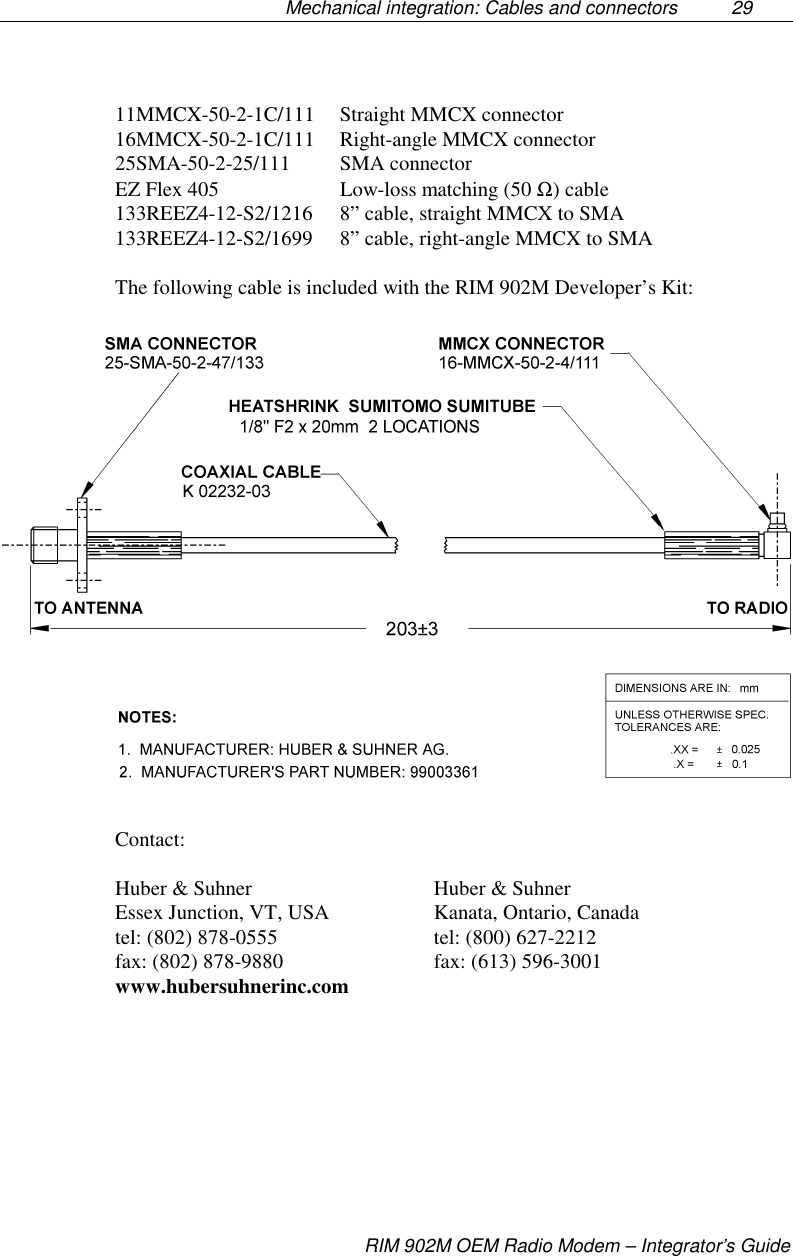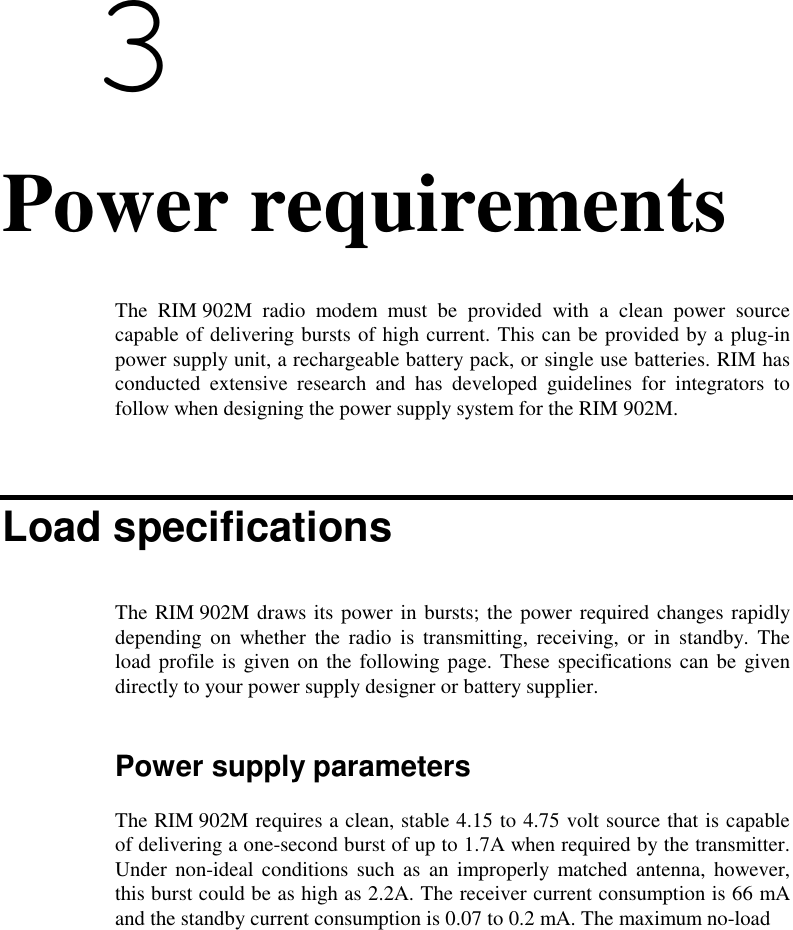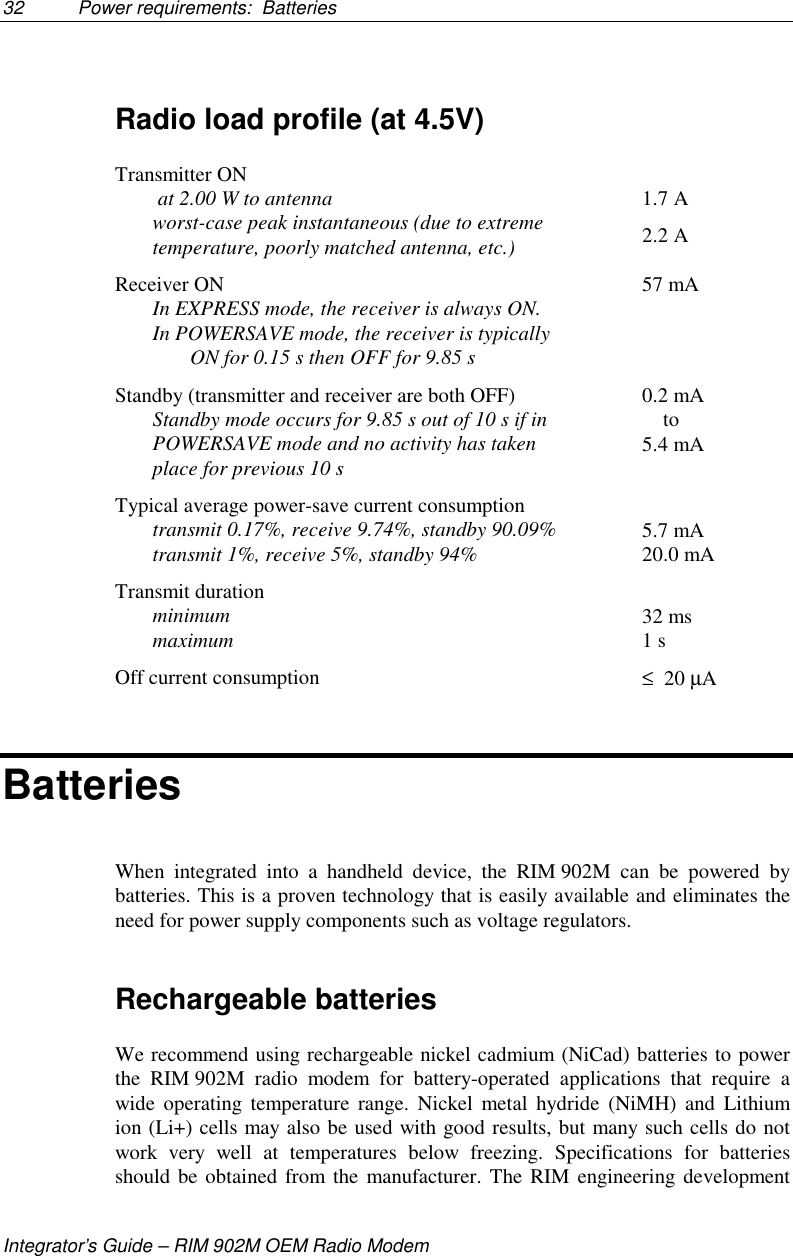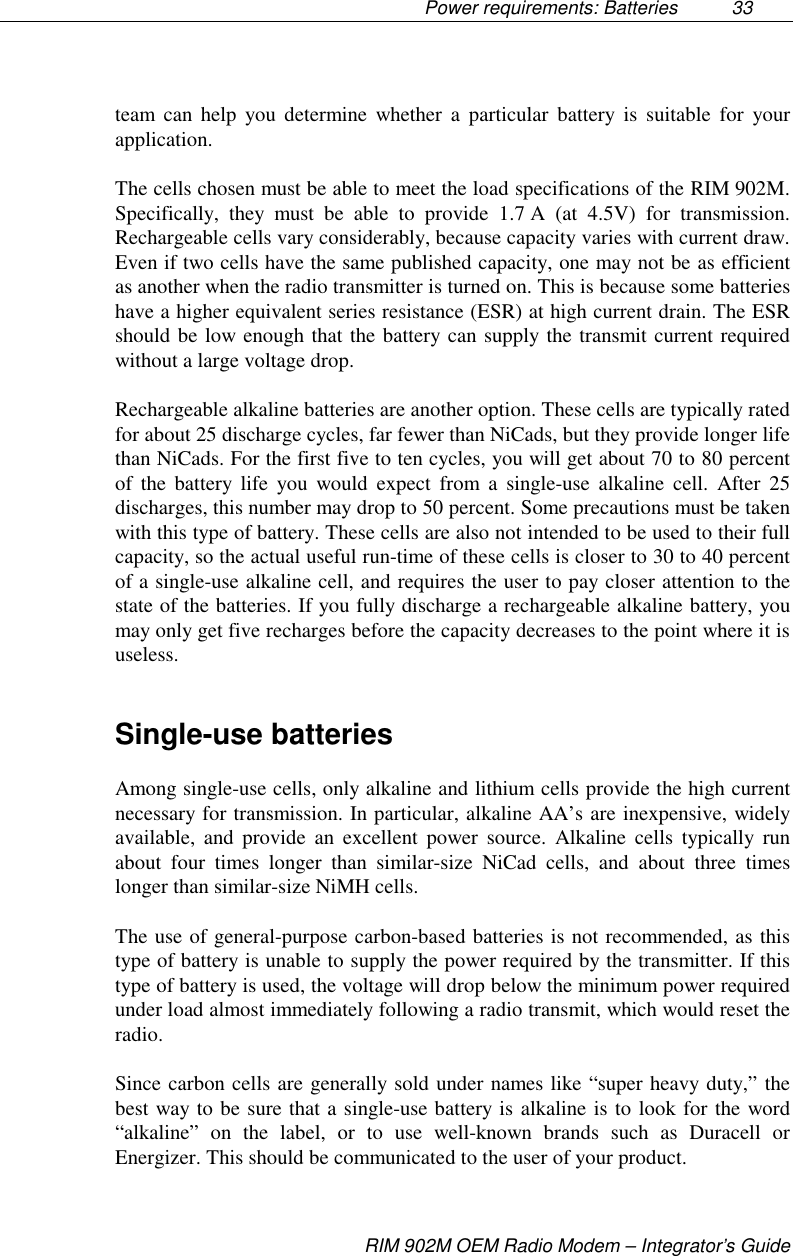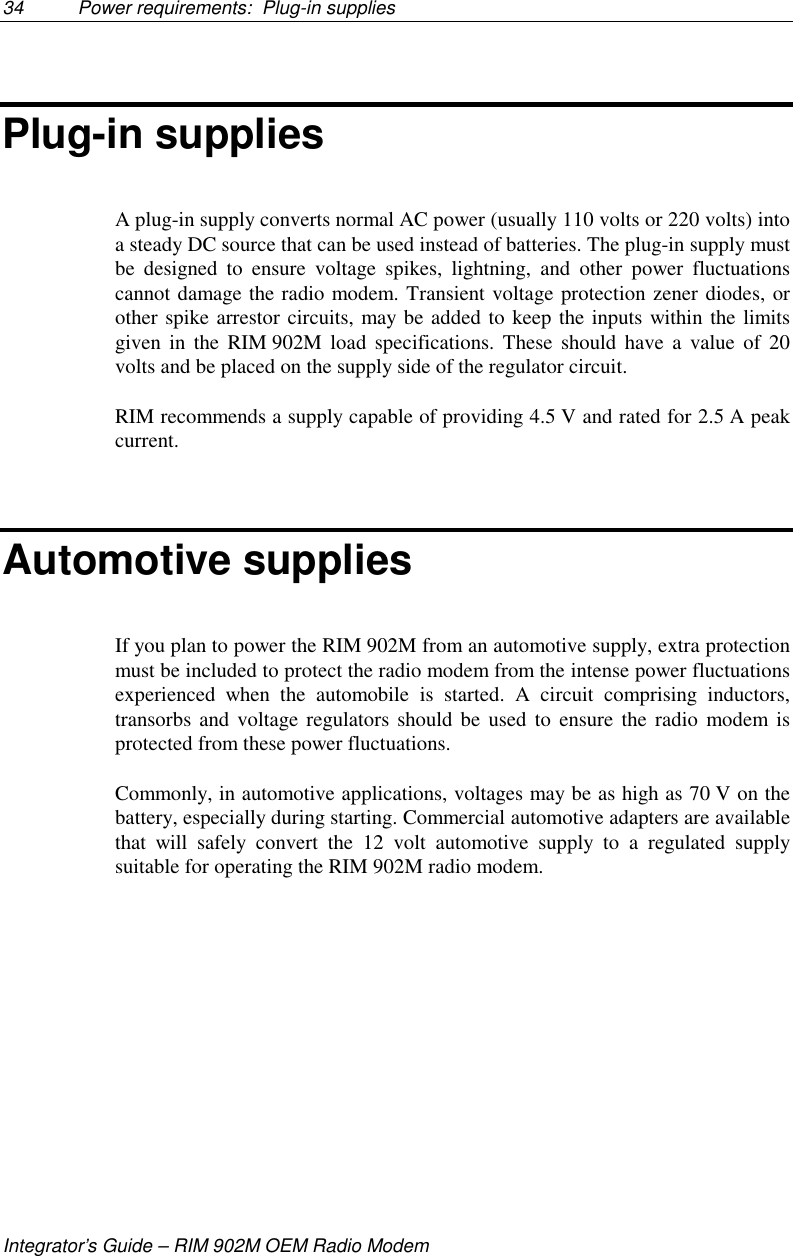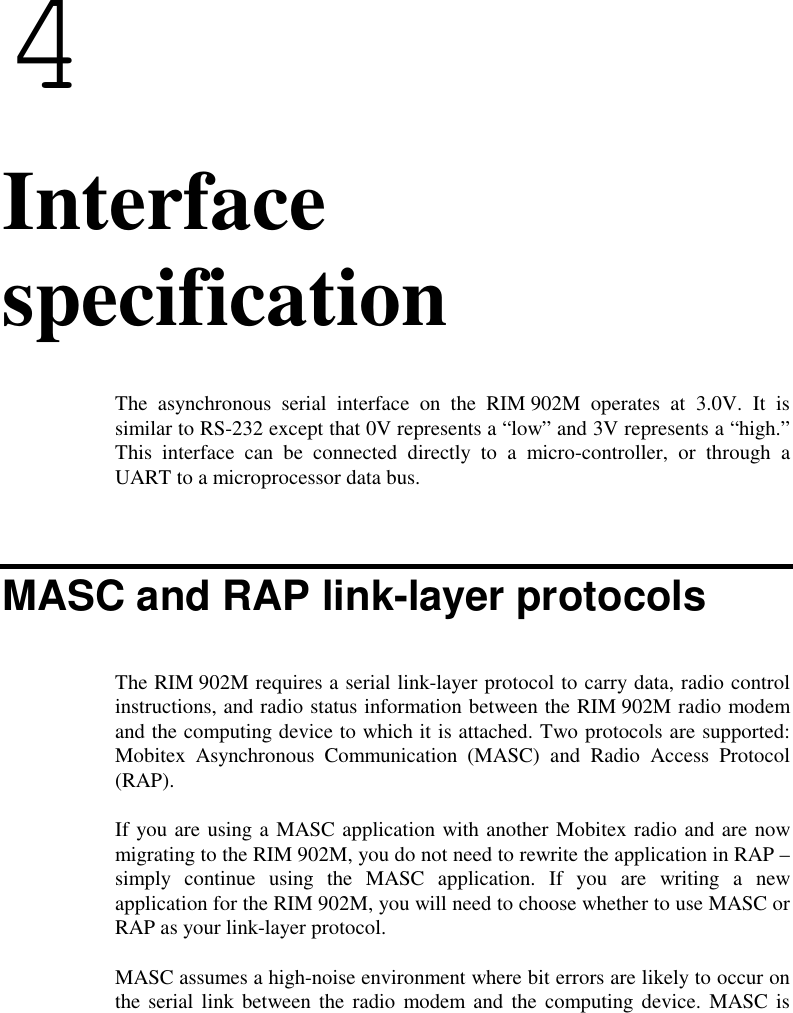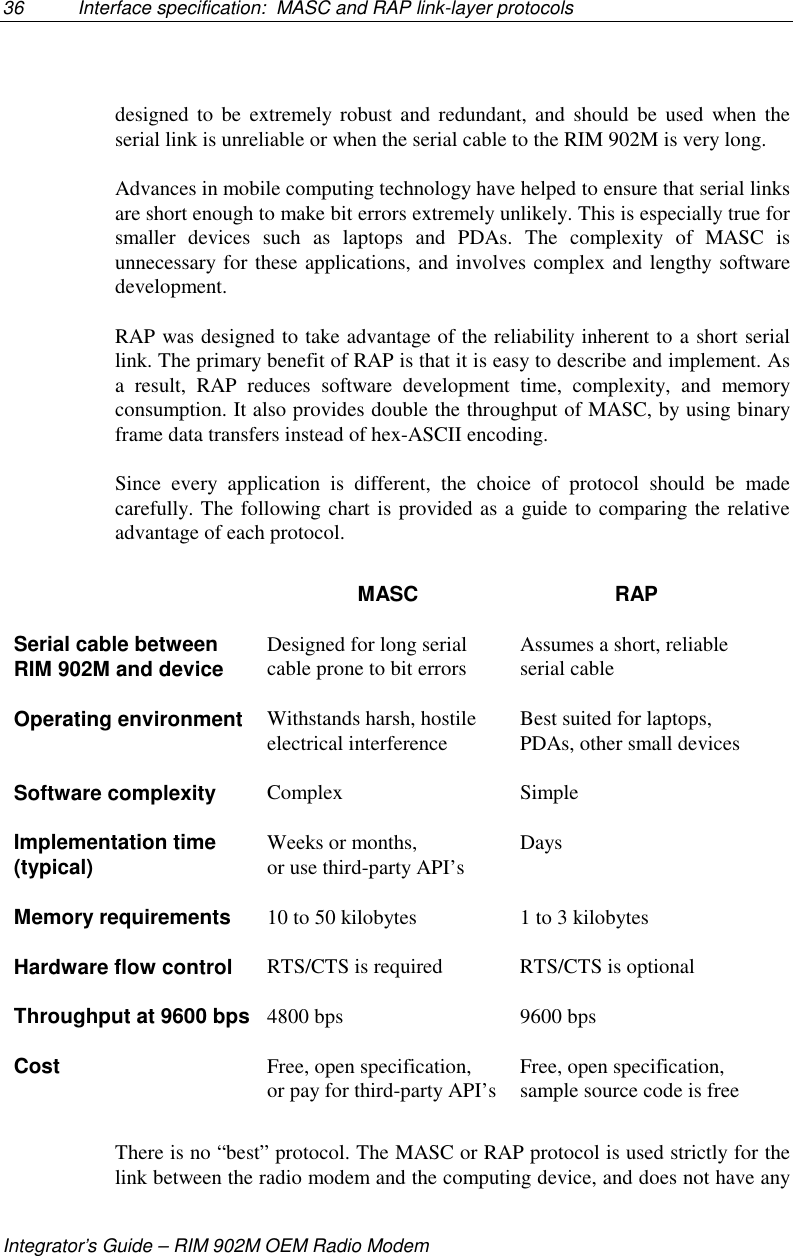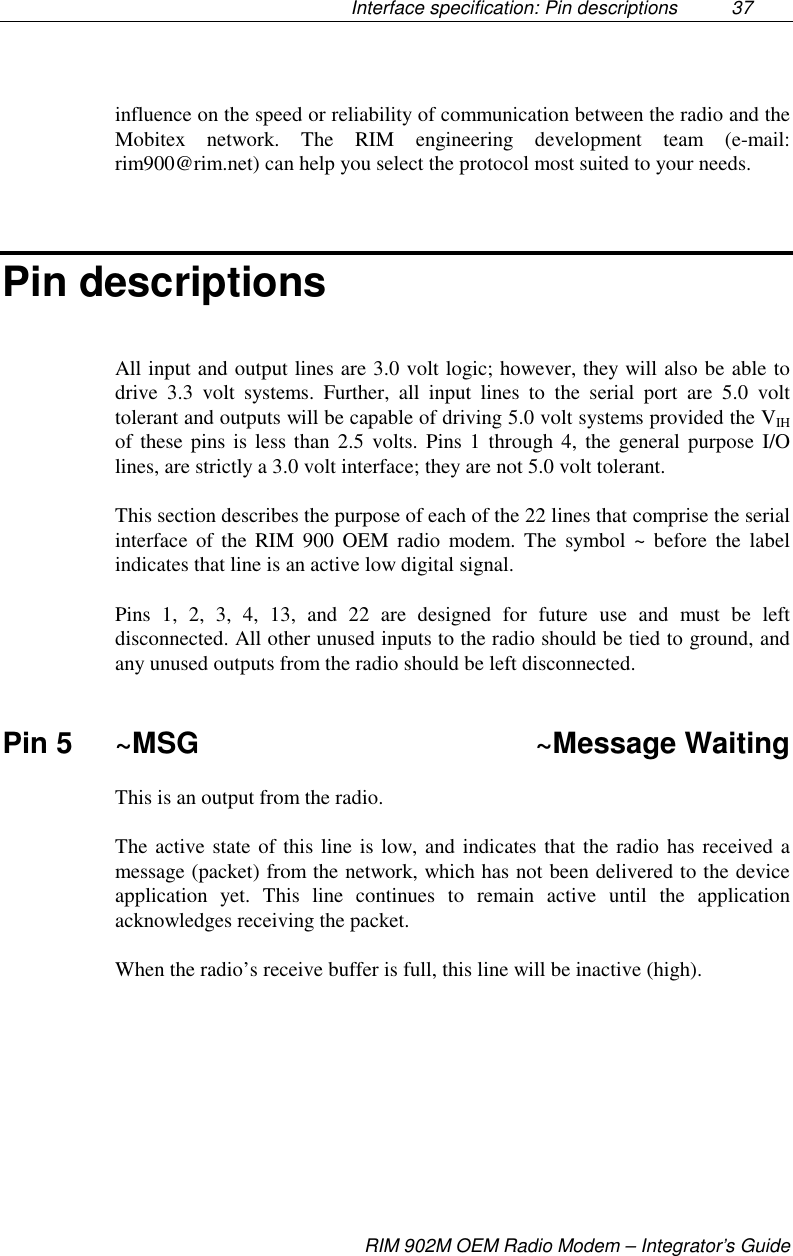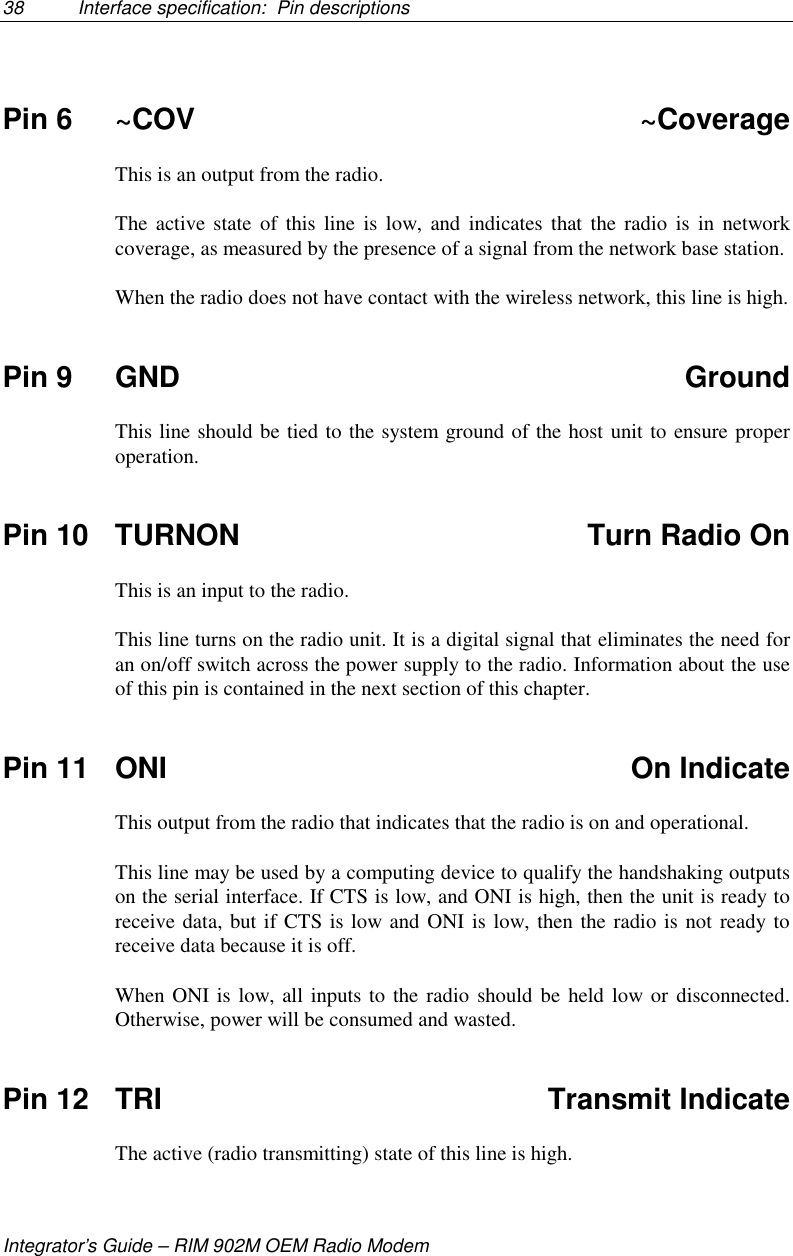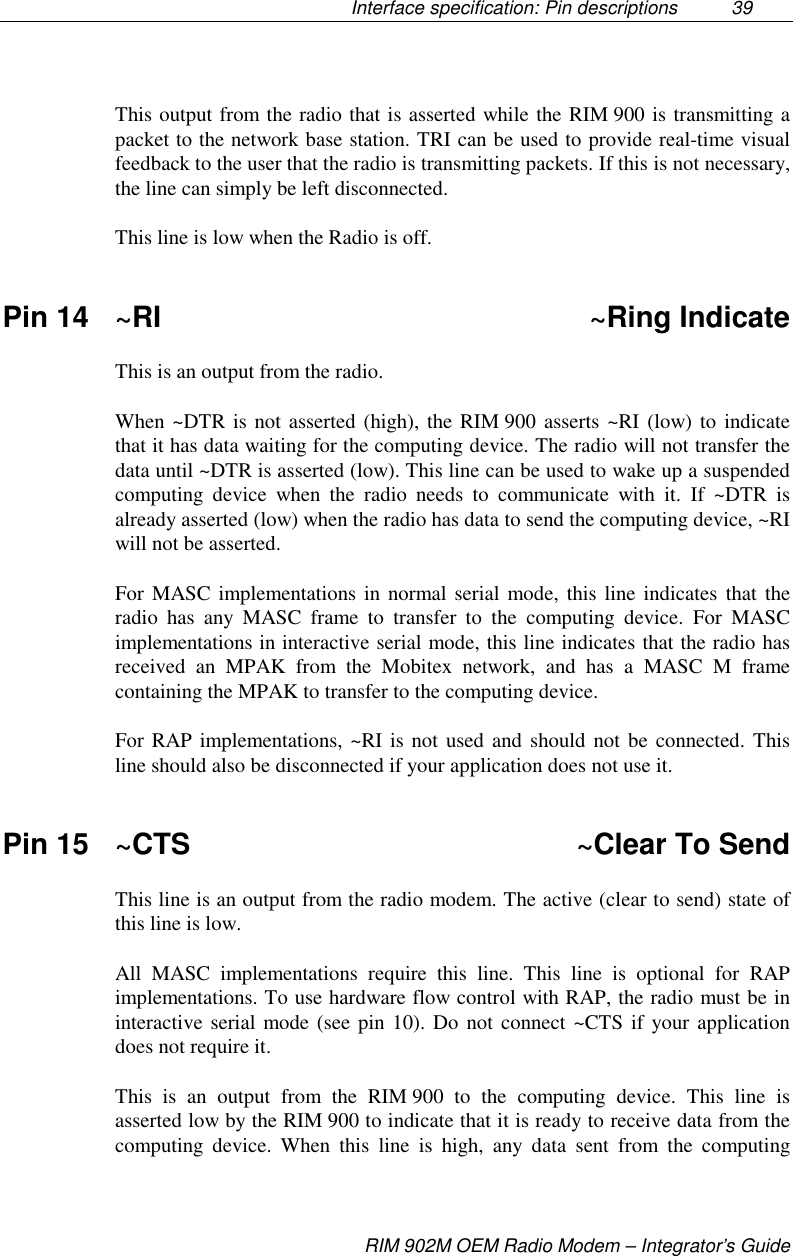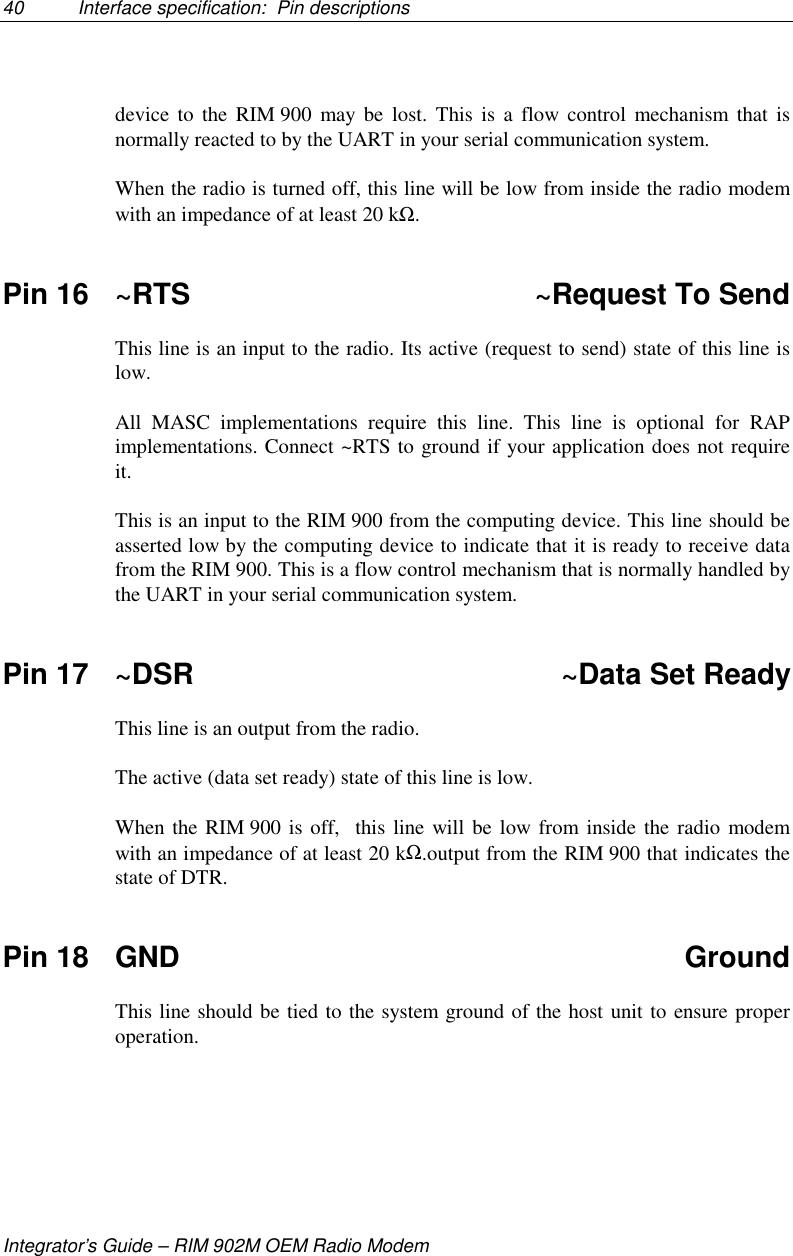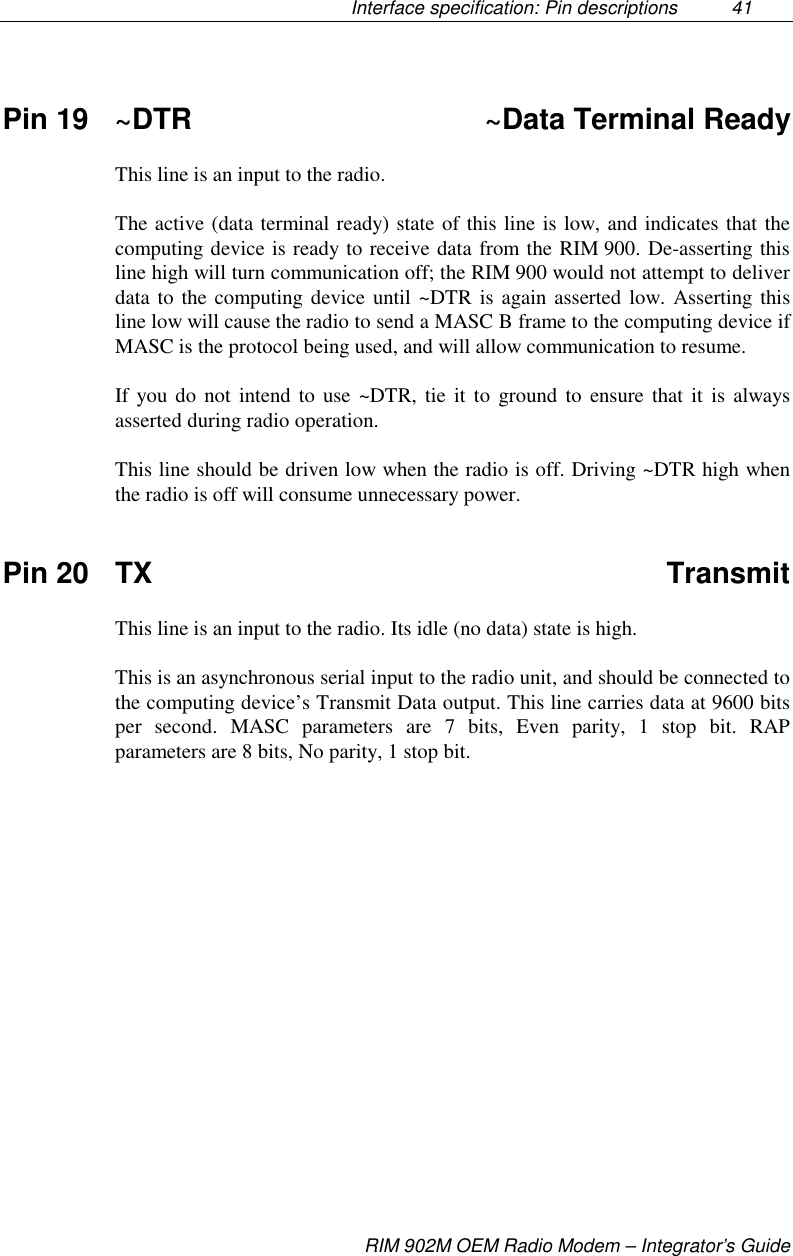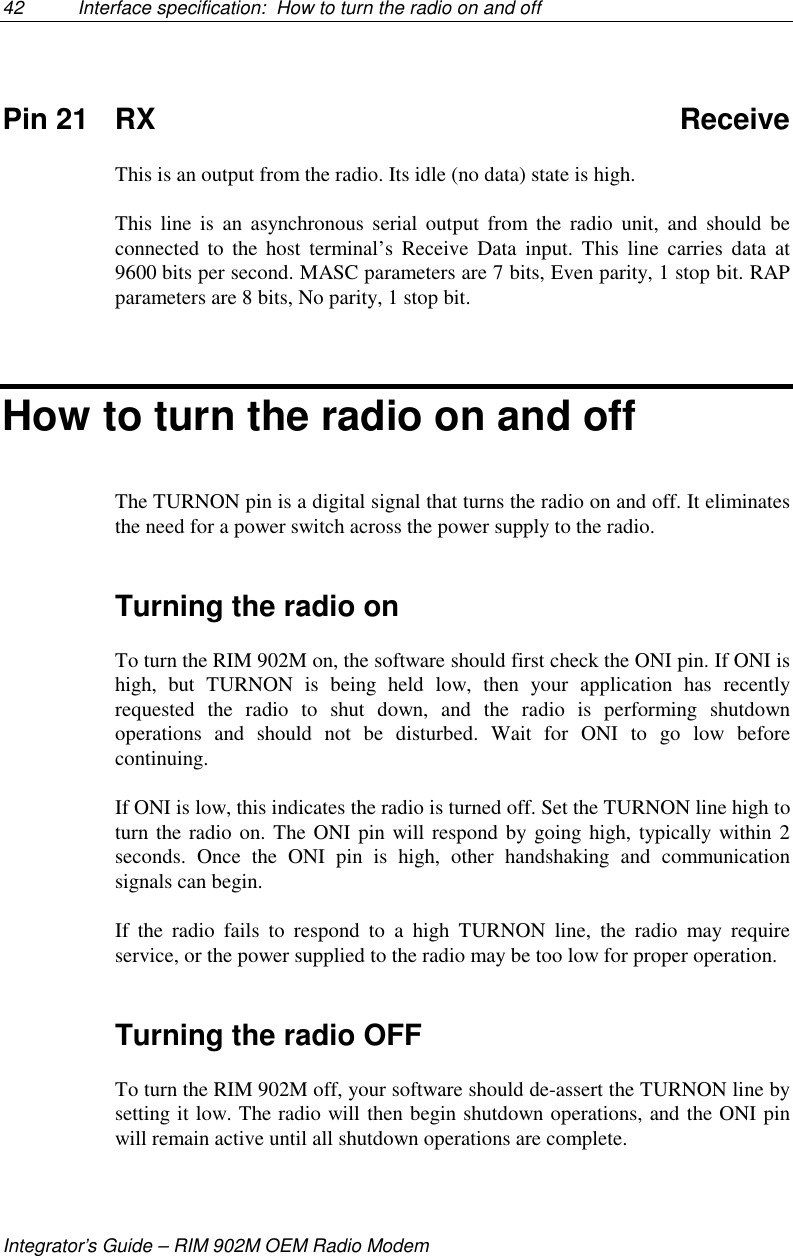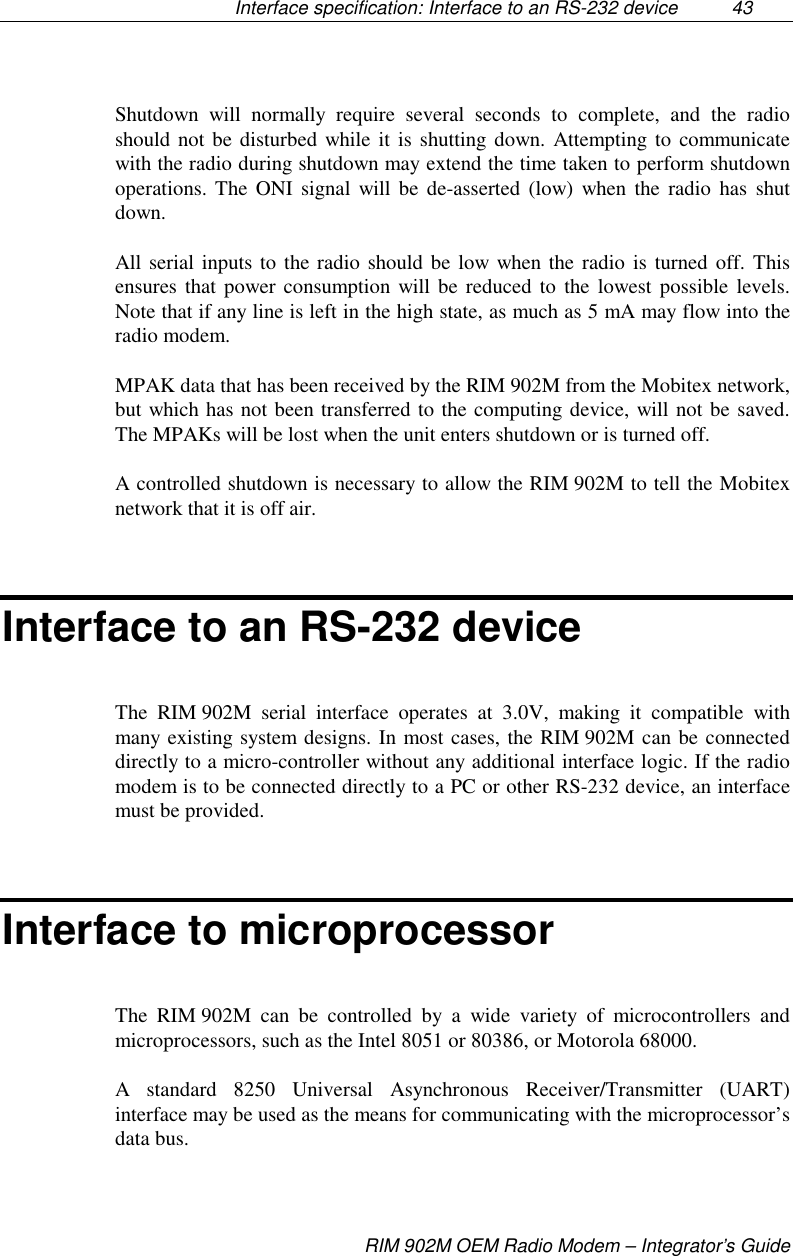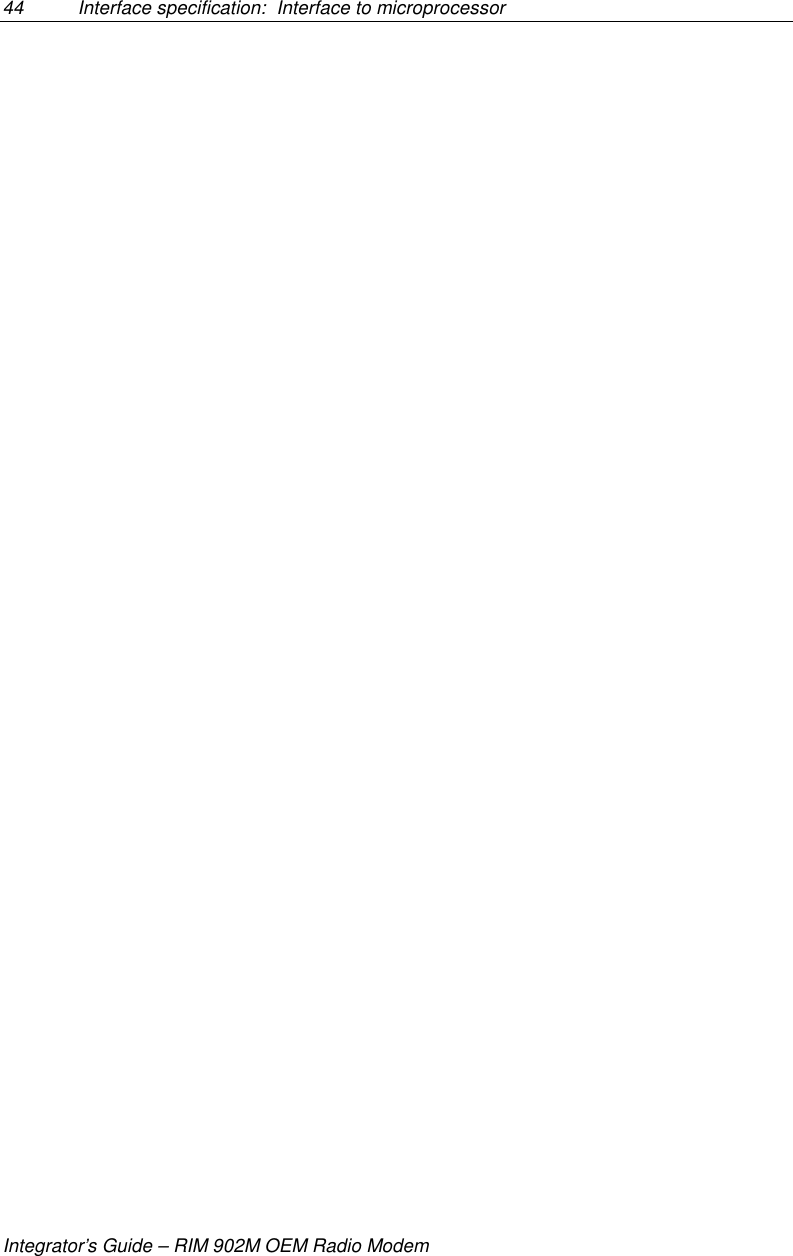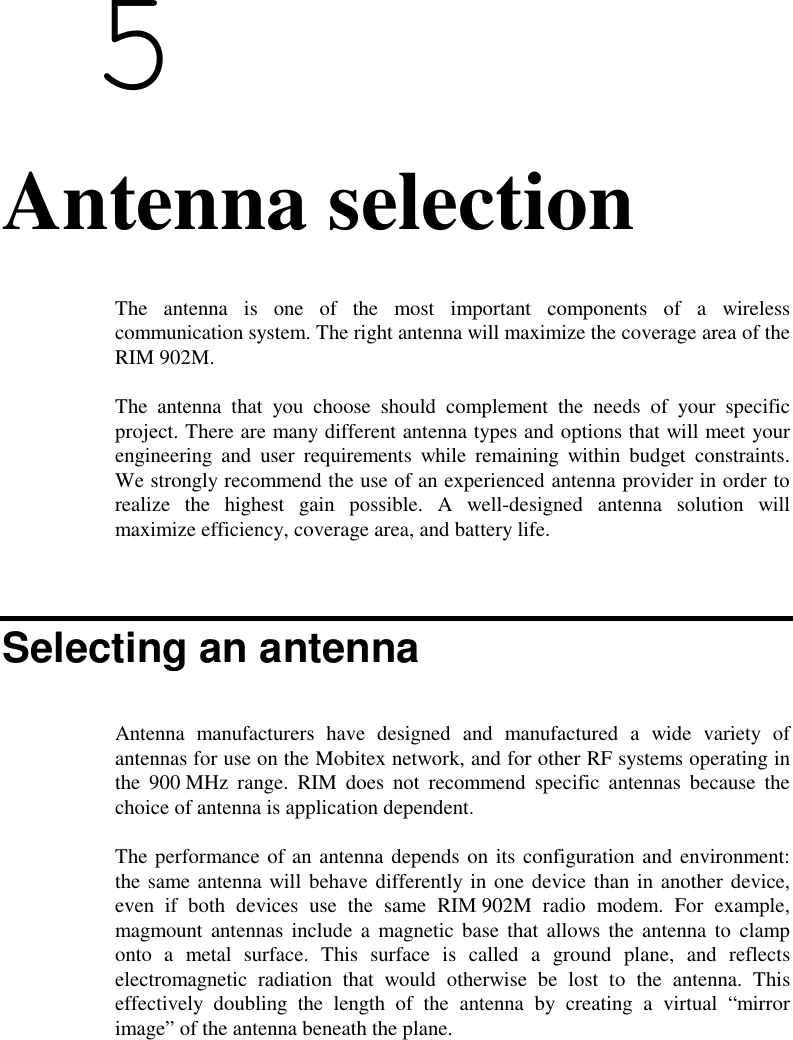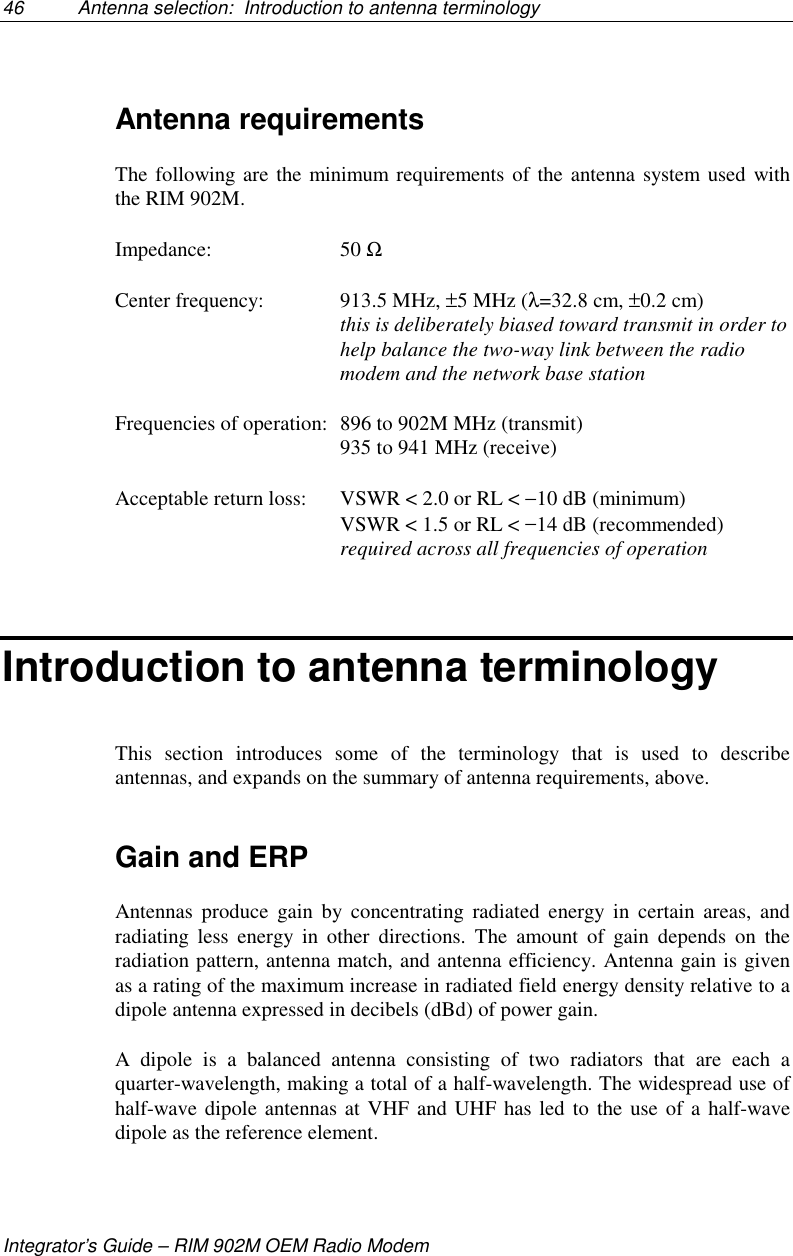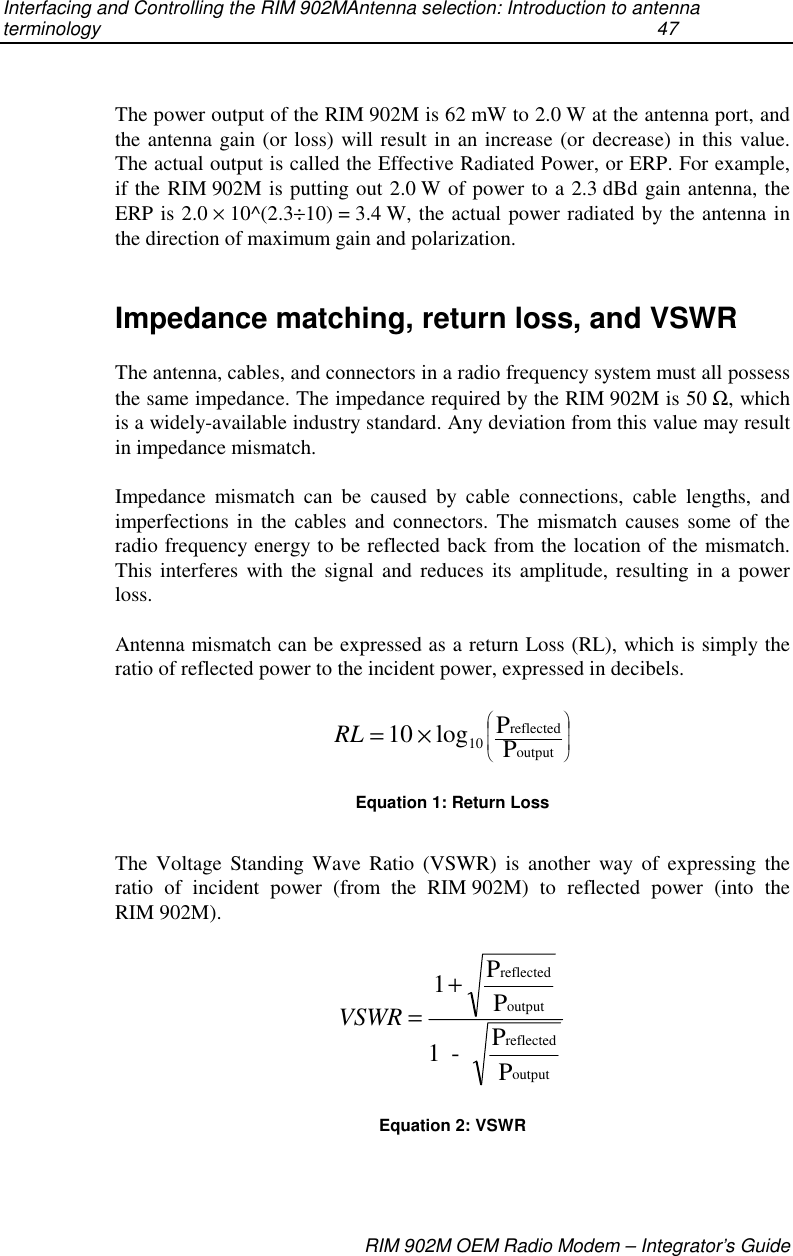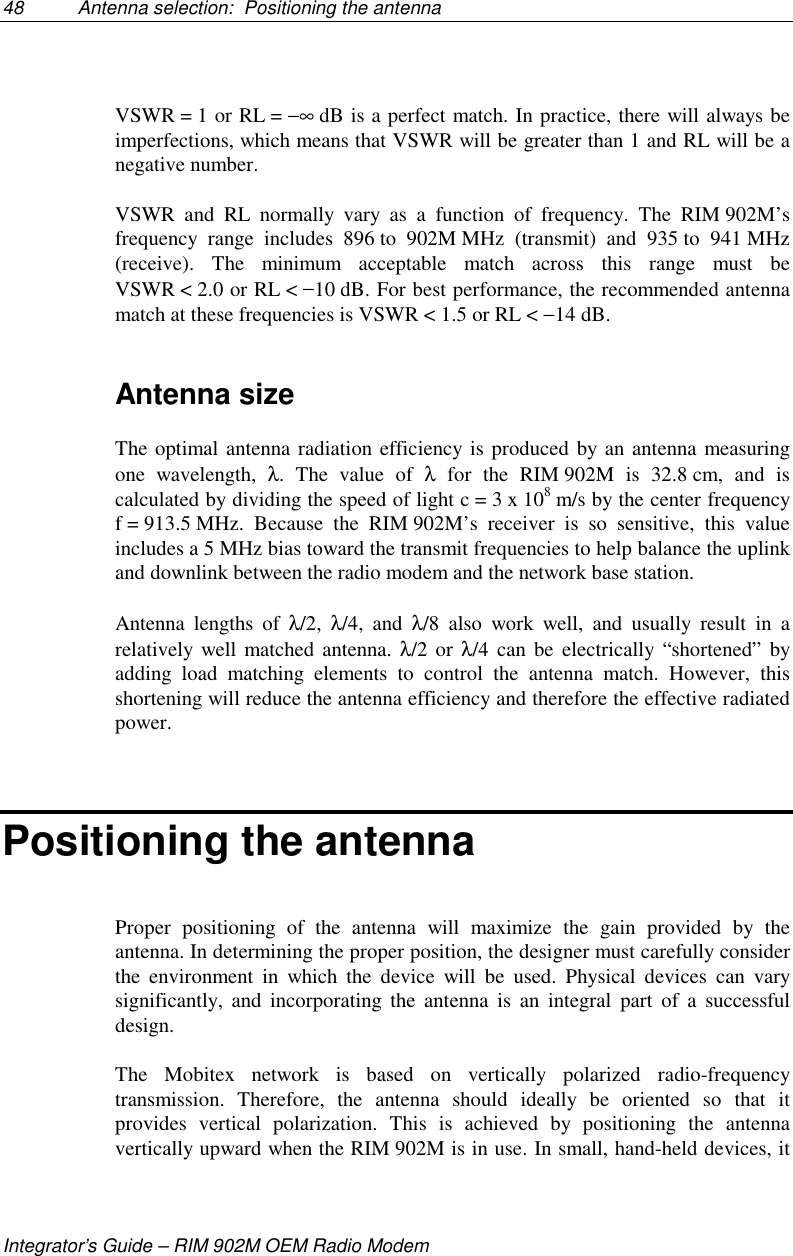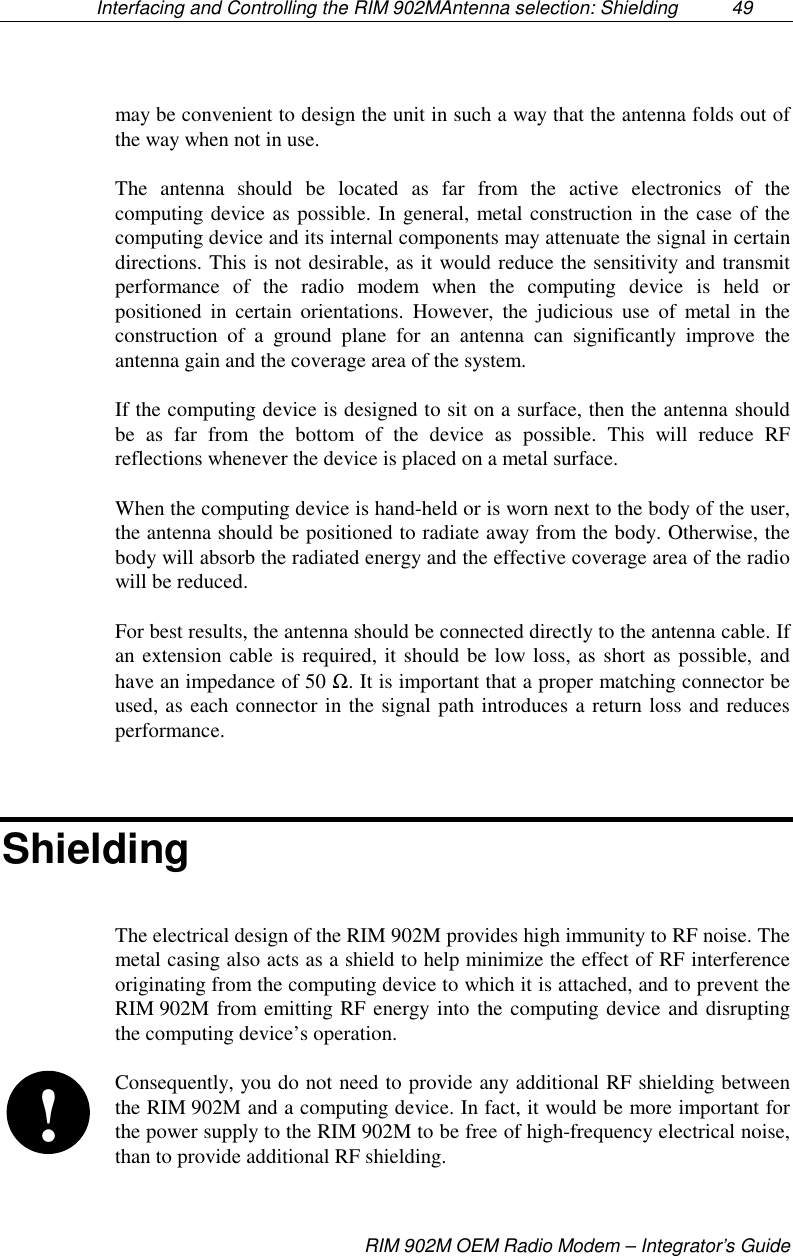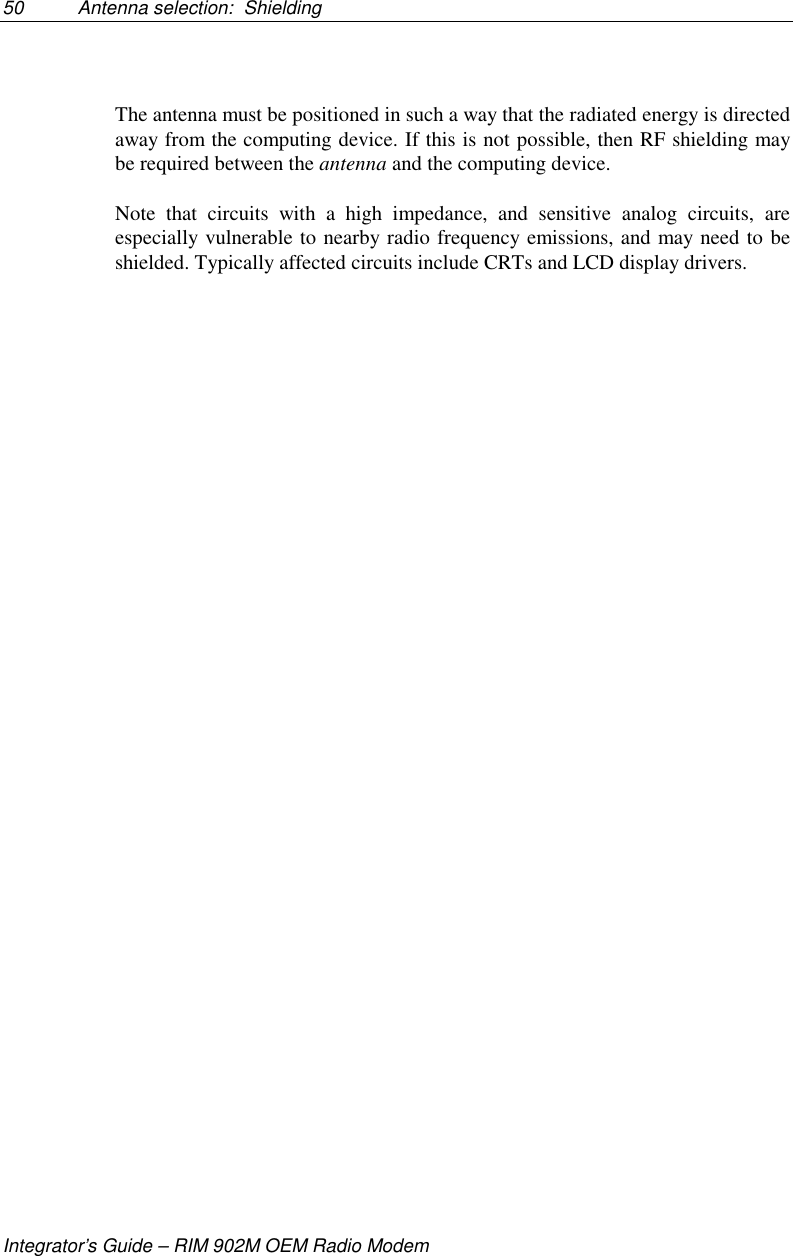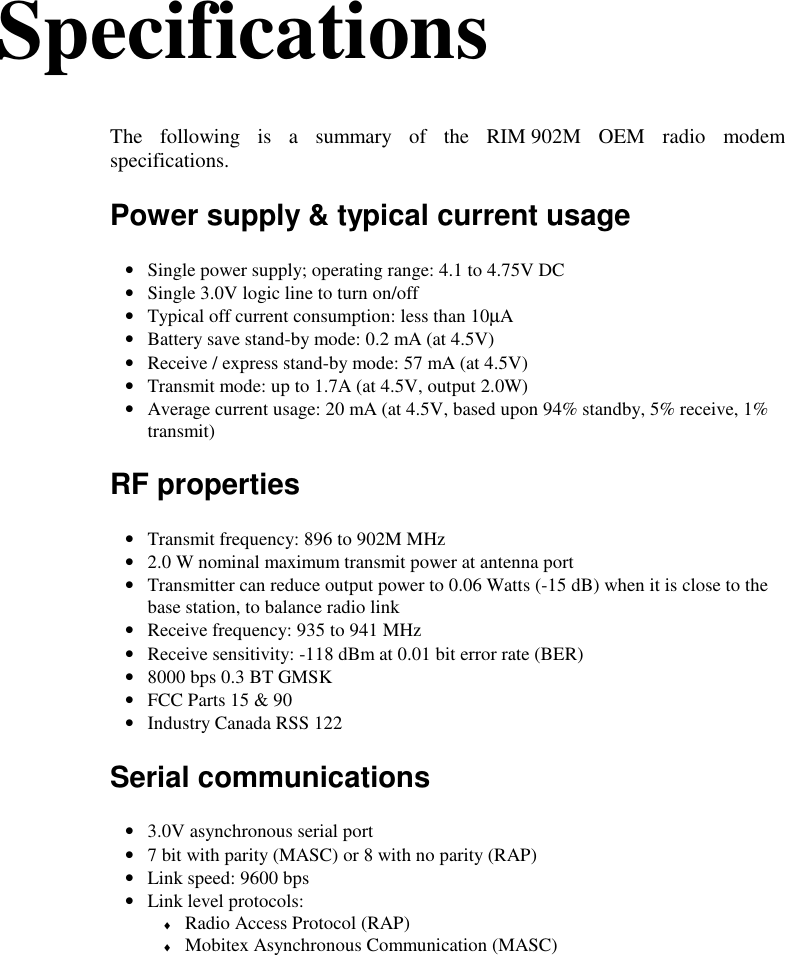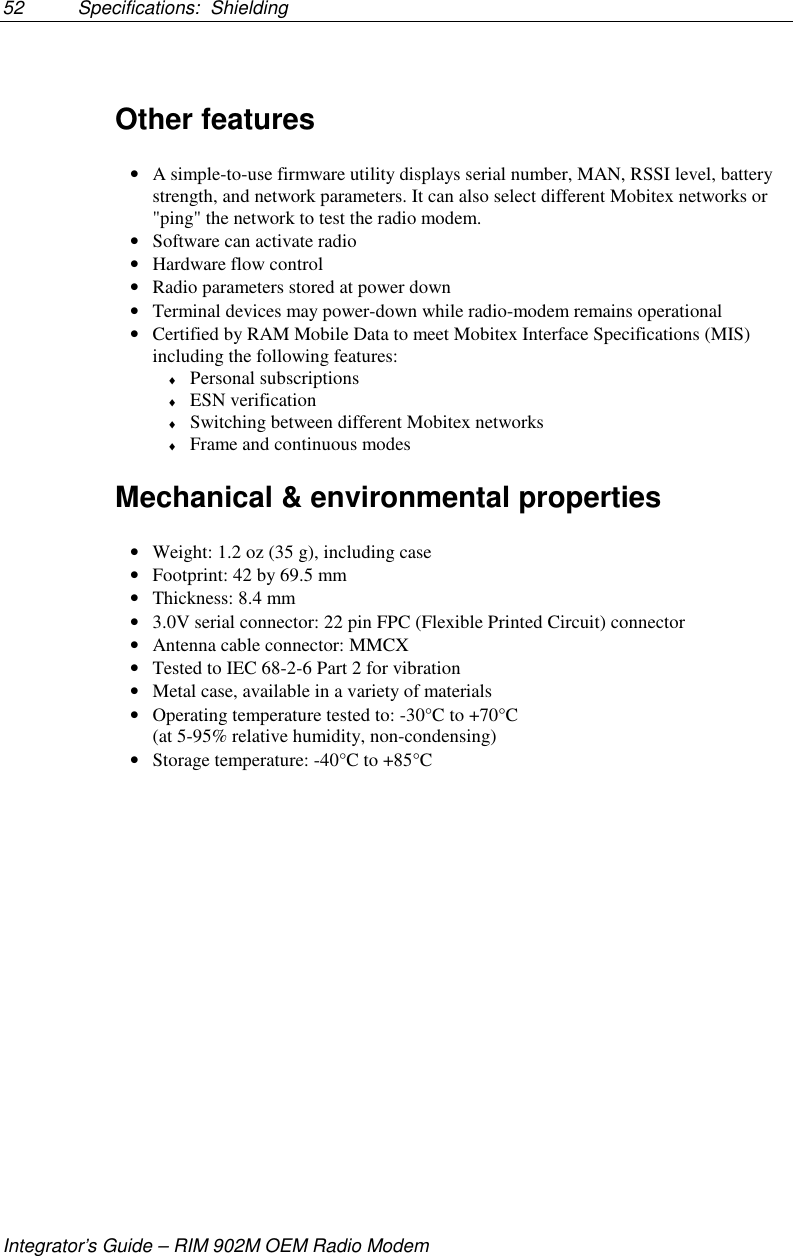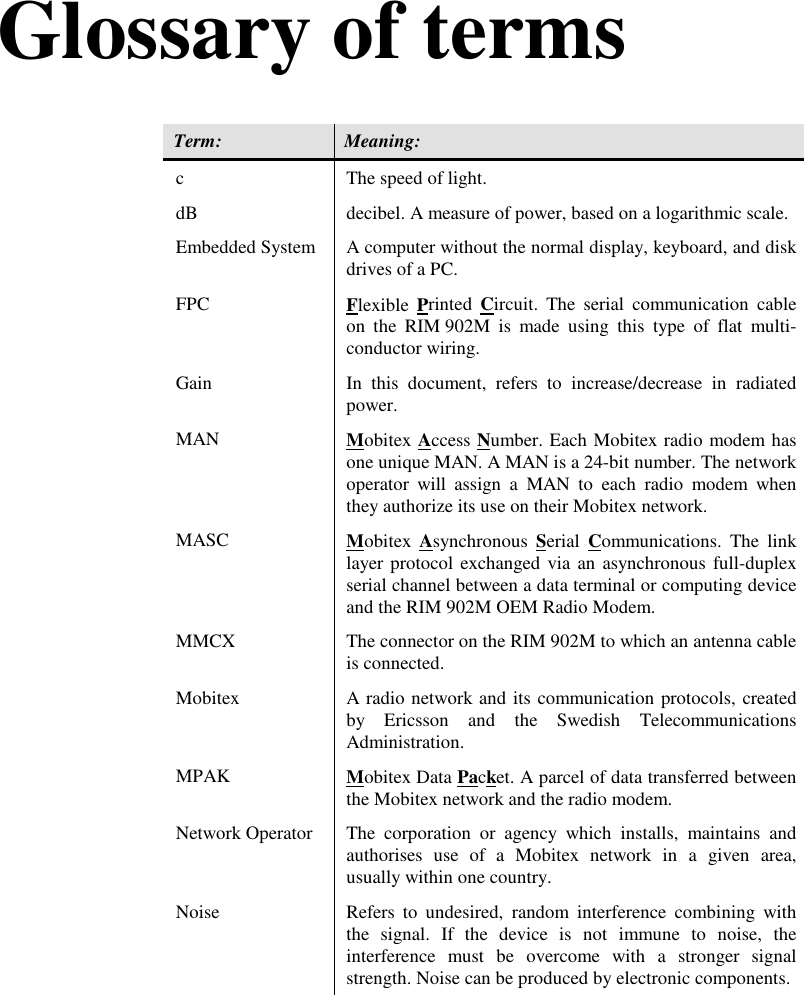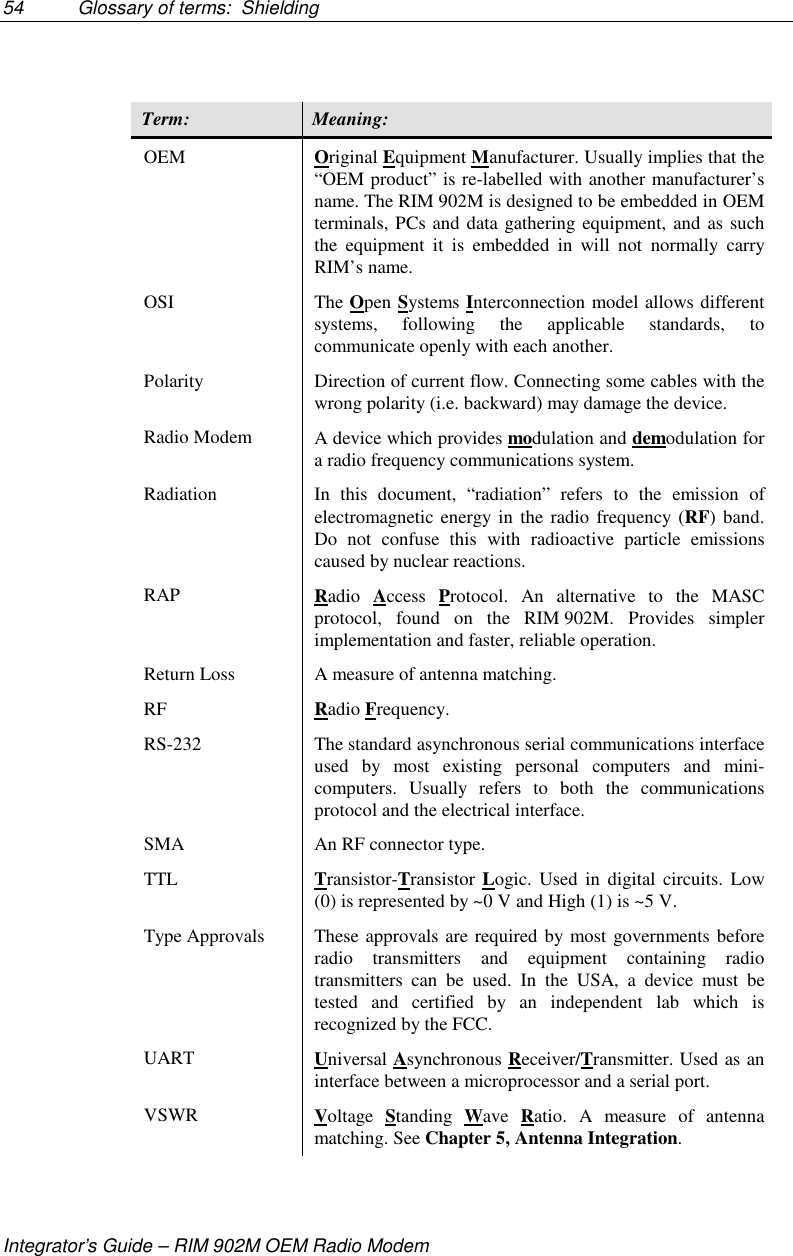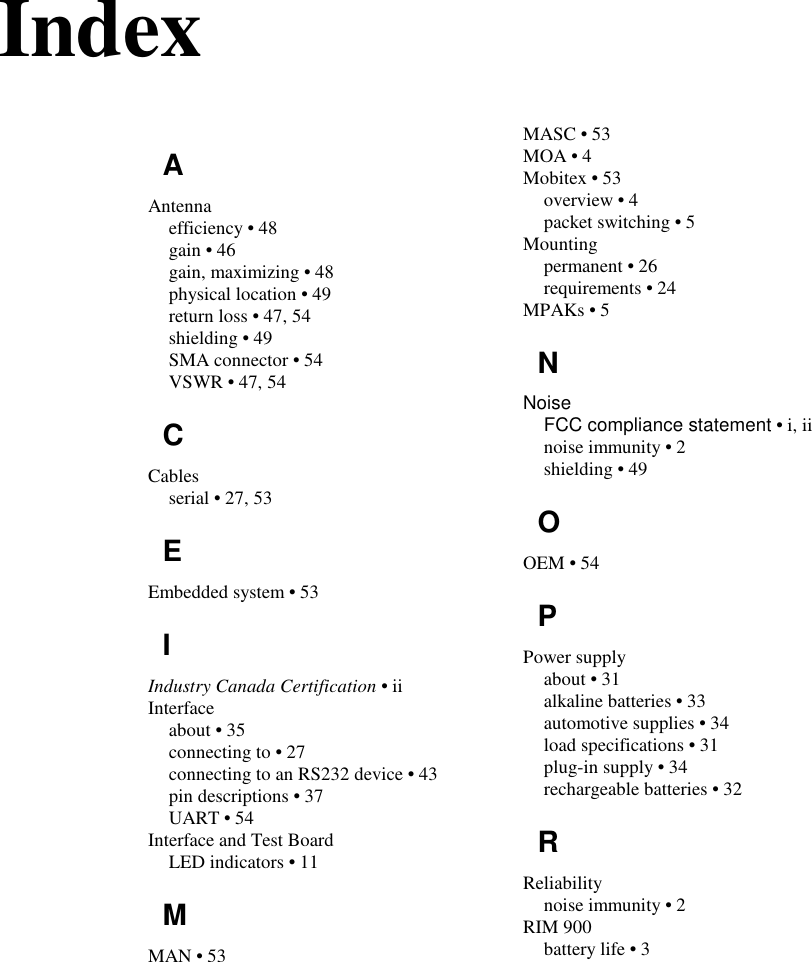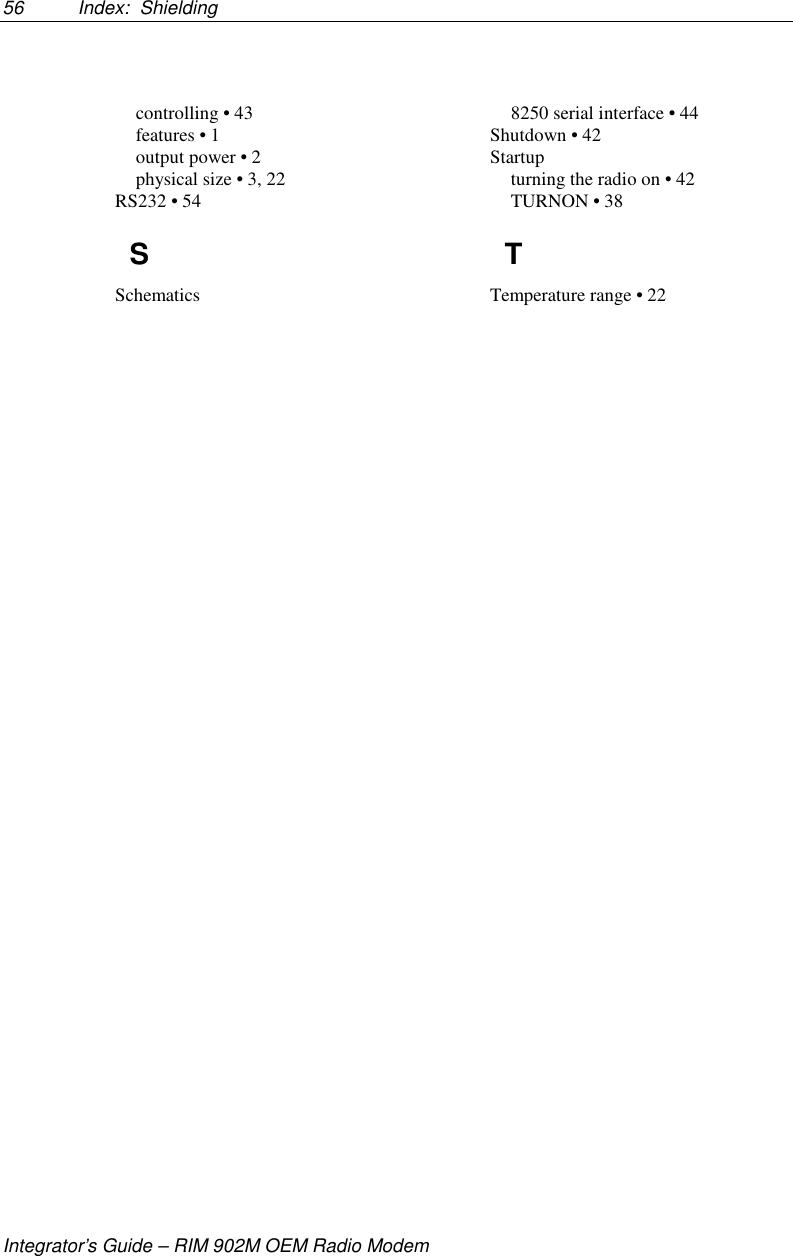BlackBerry R902M-2-O Wireless Data Modem User Manual Revised copy of Integrator Manual
BlackBerry Limited Wireless Data Modem Revised copy of Integrator Manual
Contents
- 1. User guide
- 2. Revised copy of Integrator Manual
Revised copy of Integrator Manual
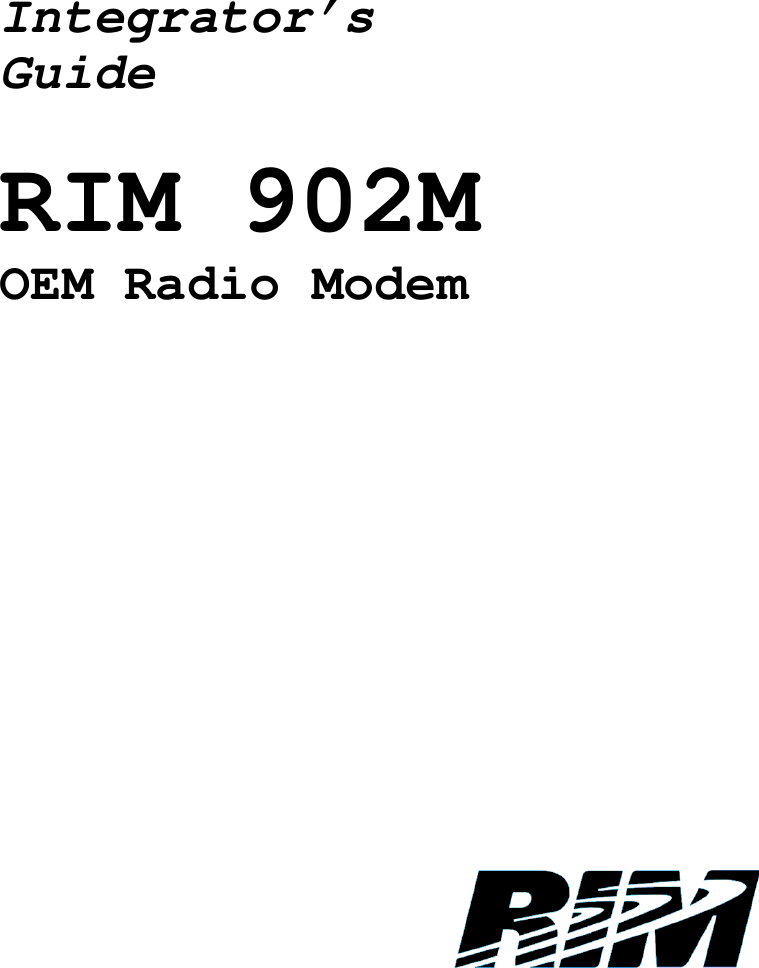
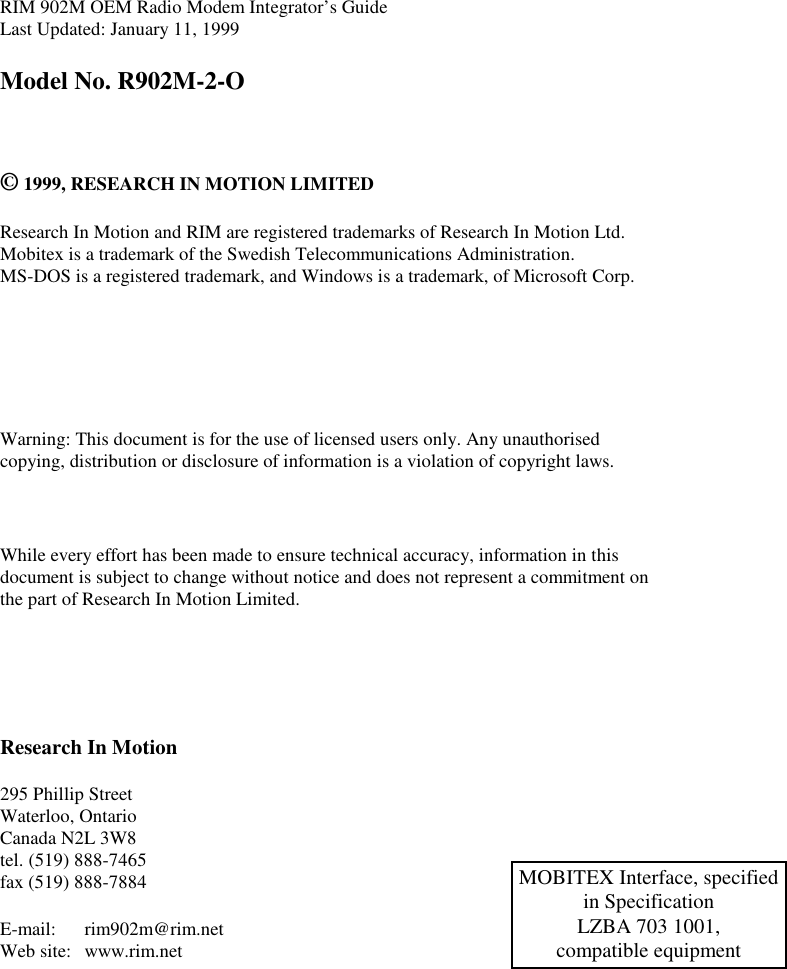
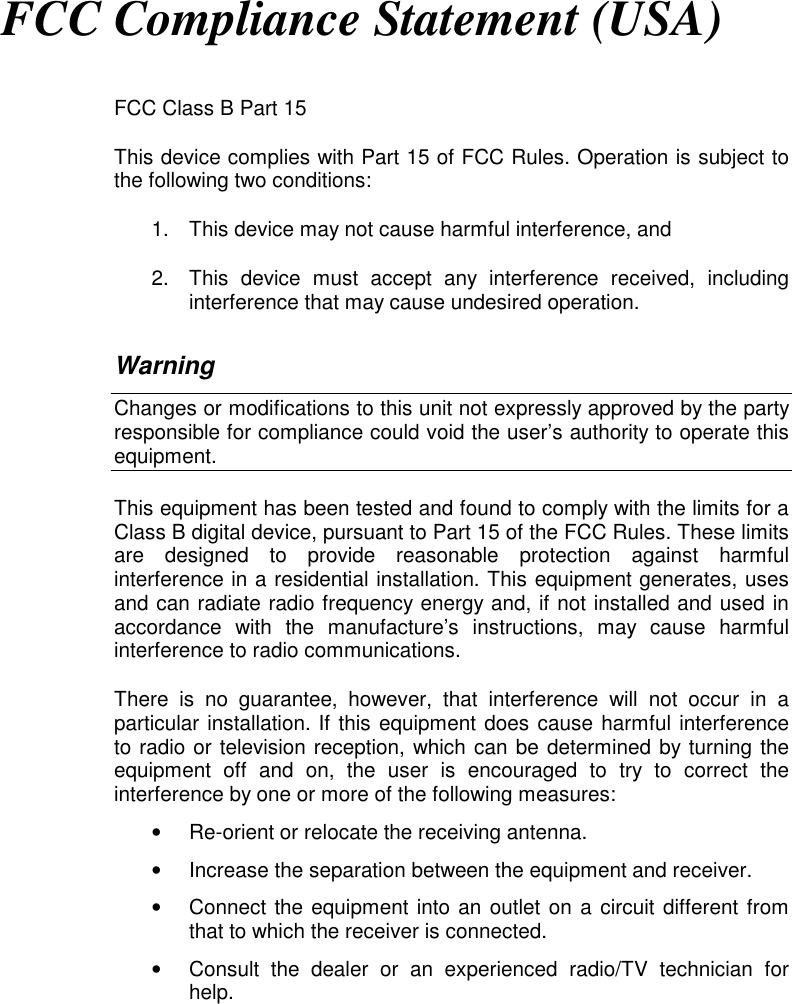
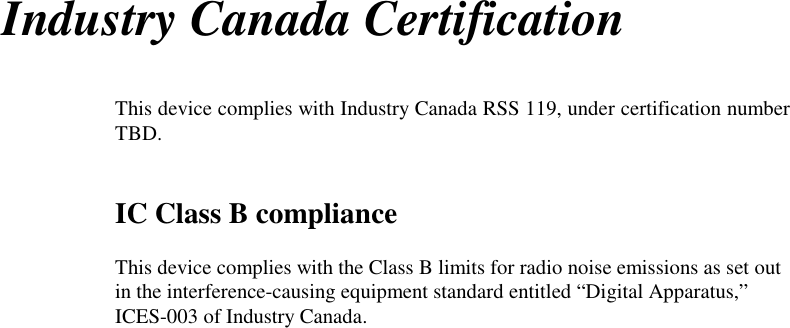
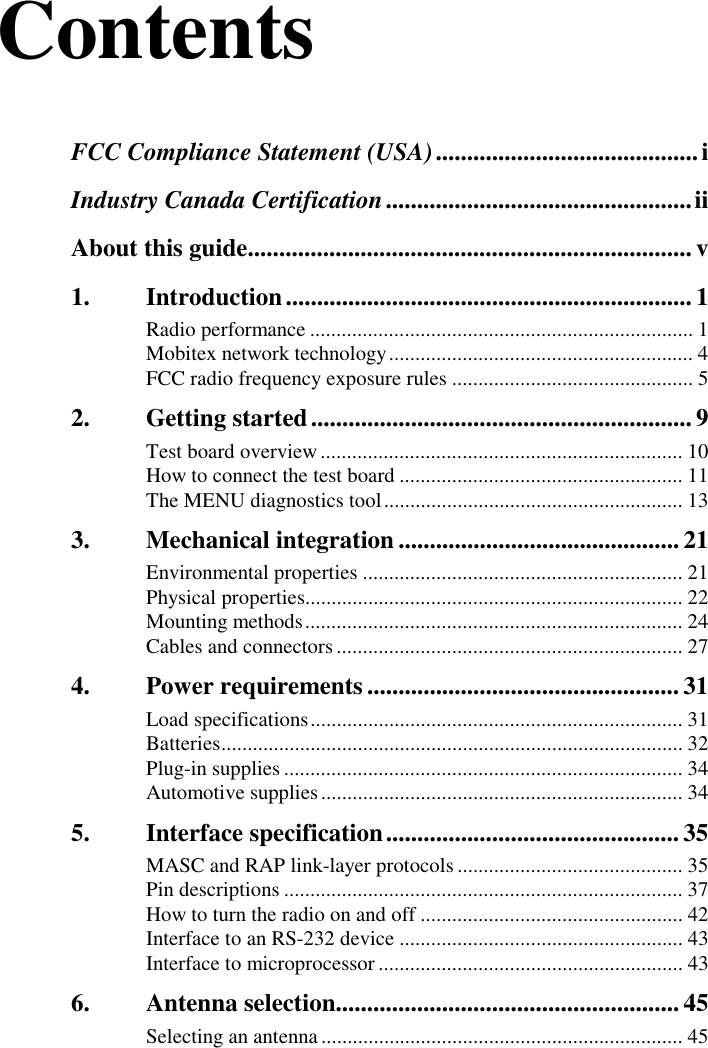

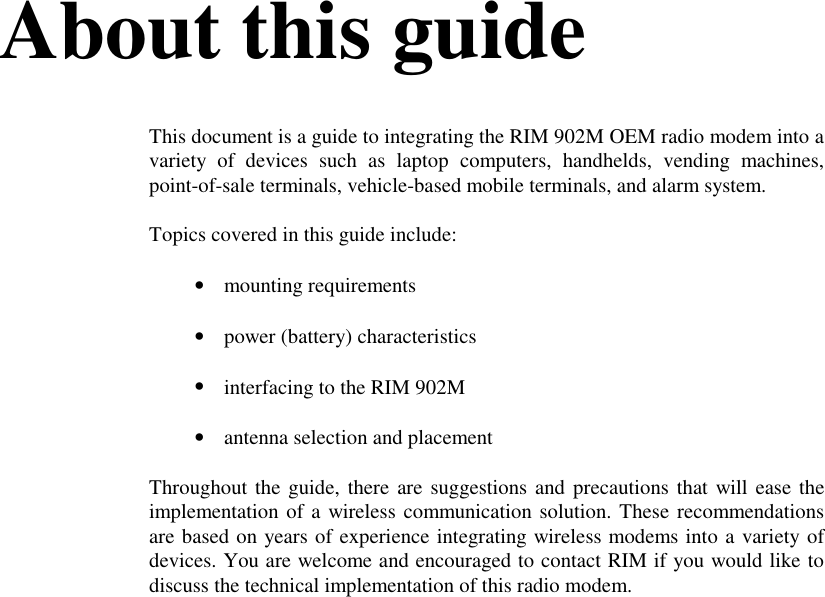
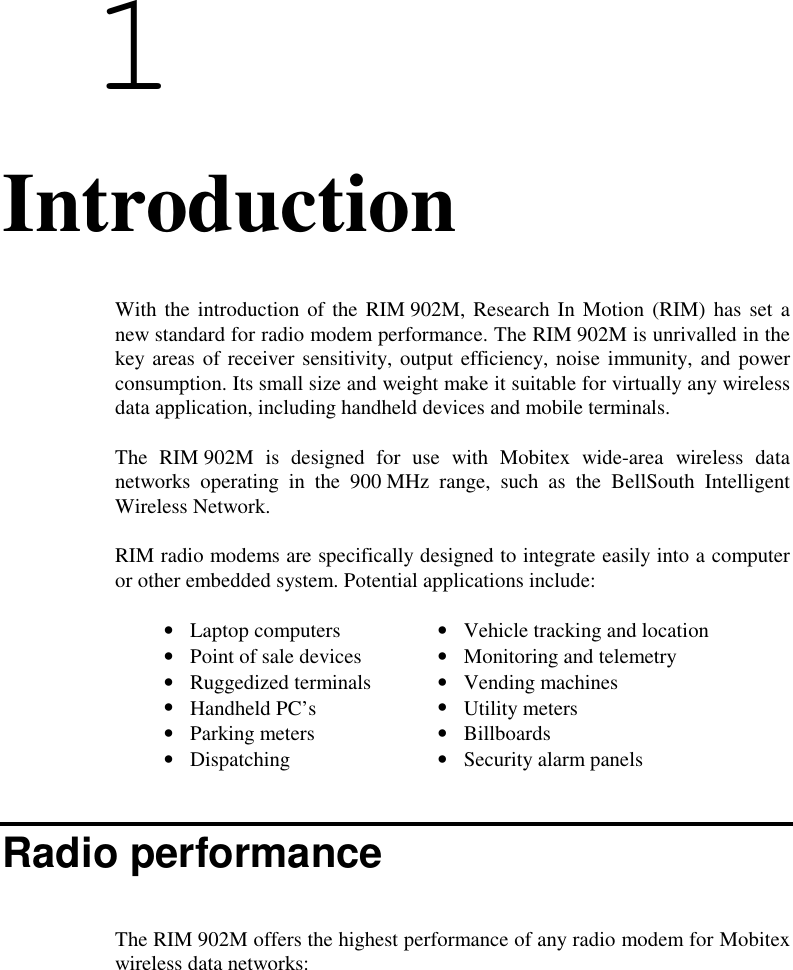
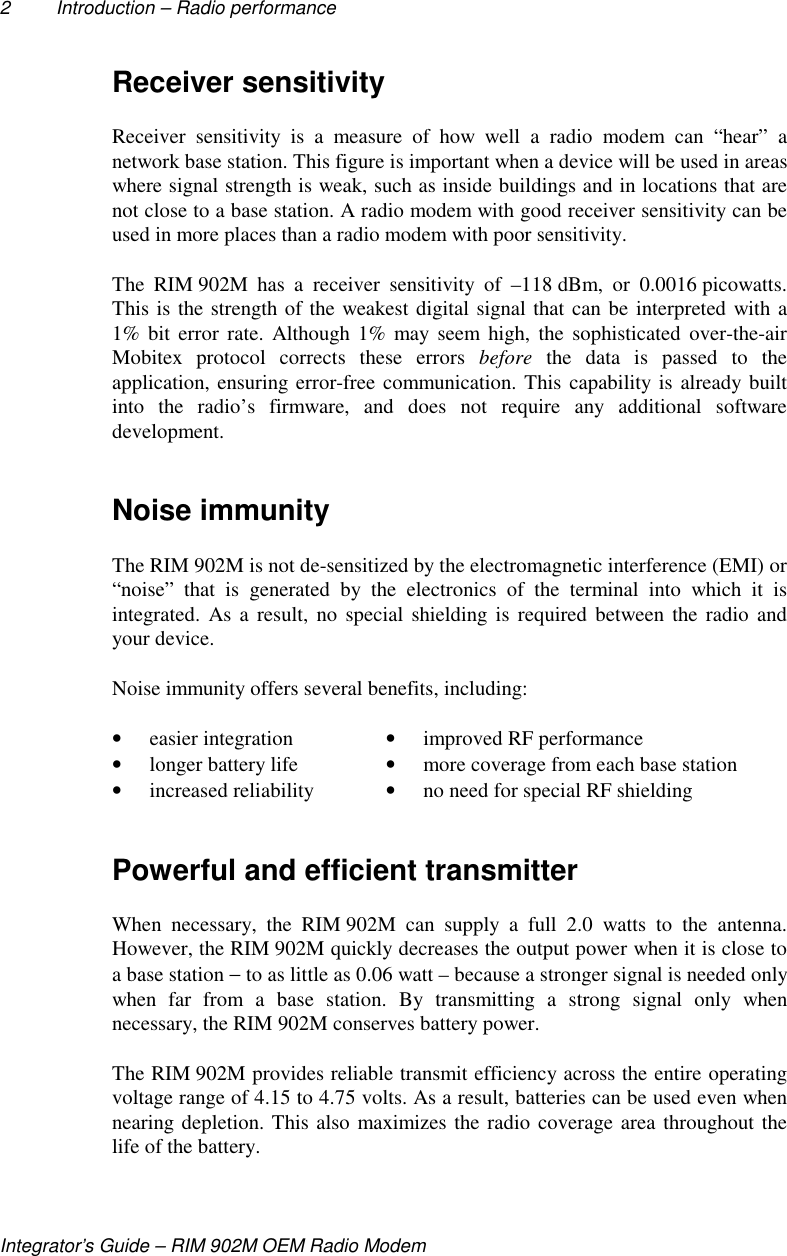
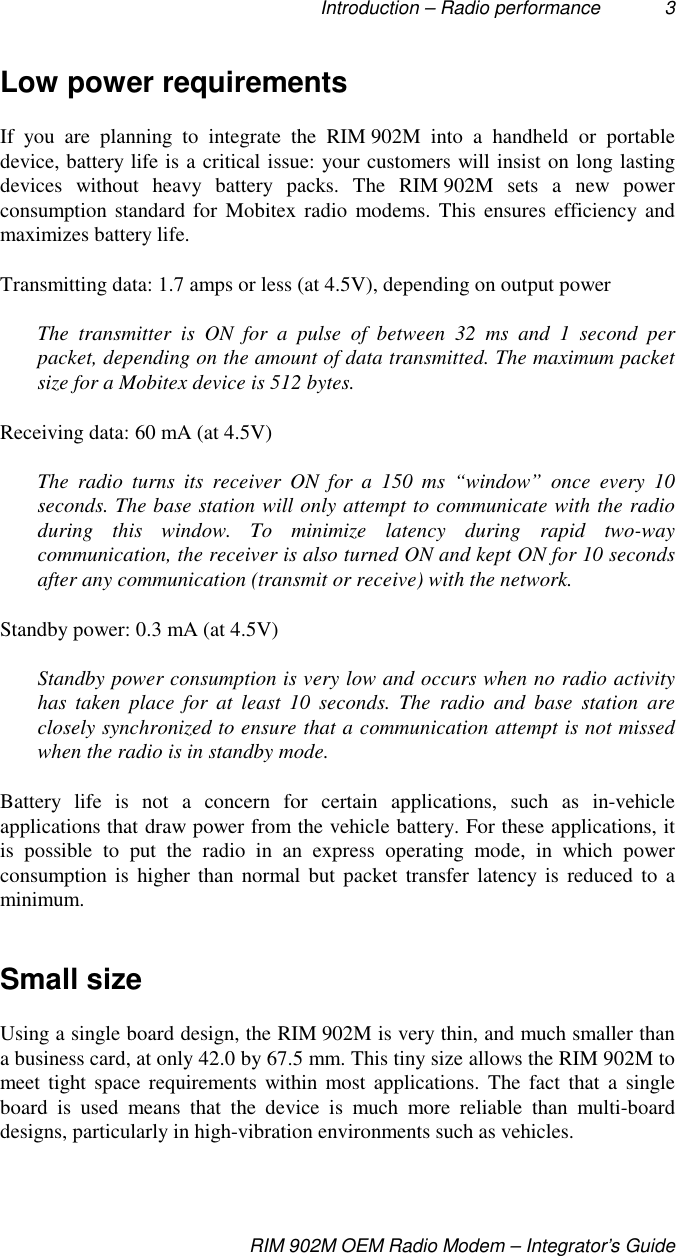
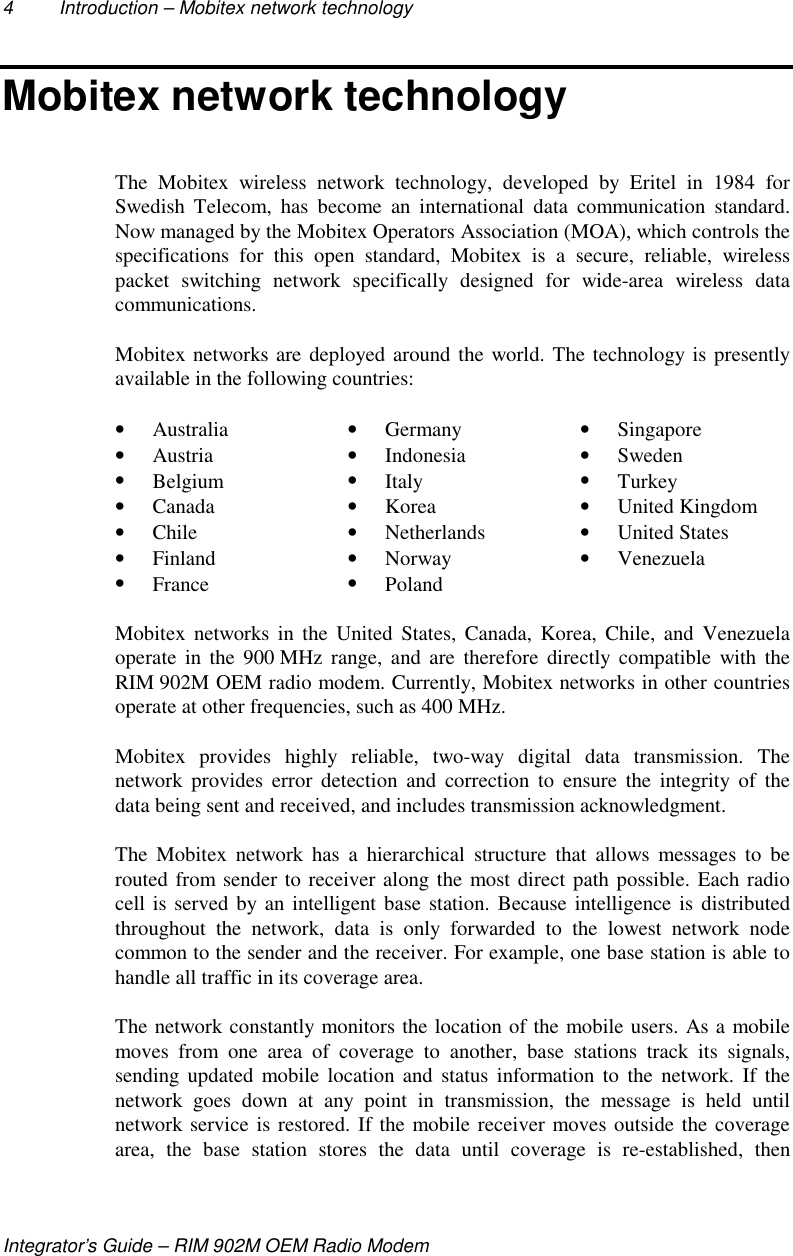
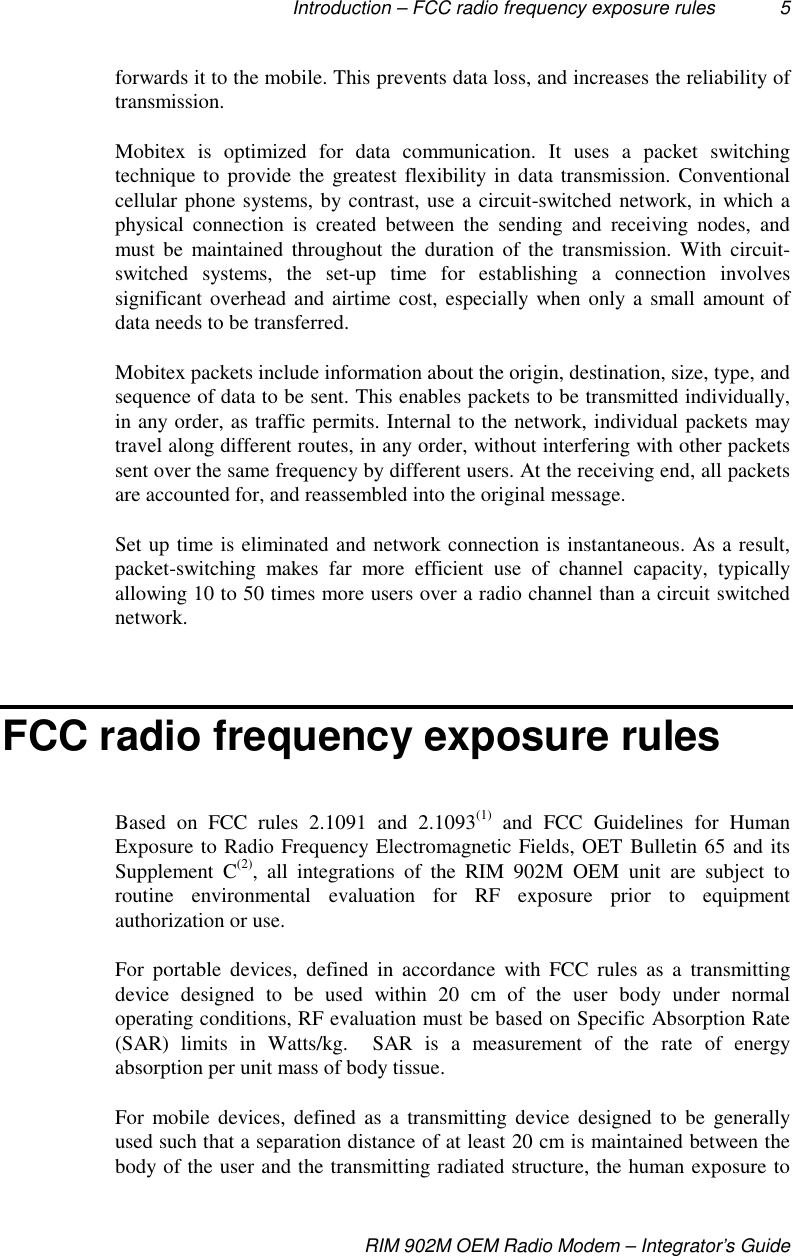
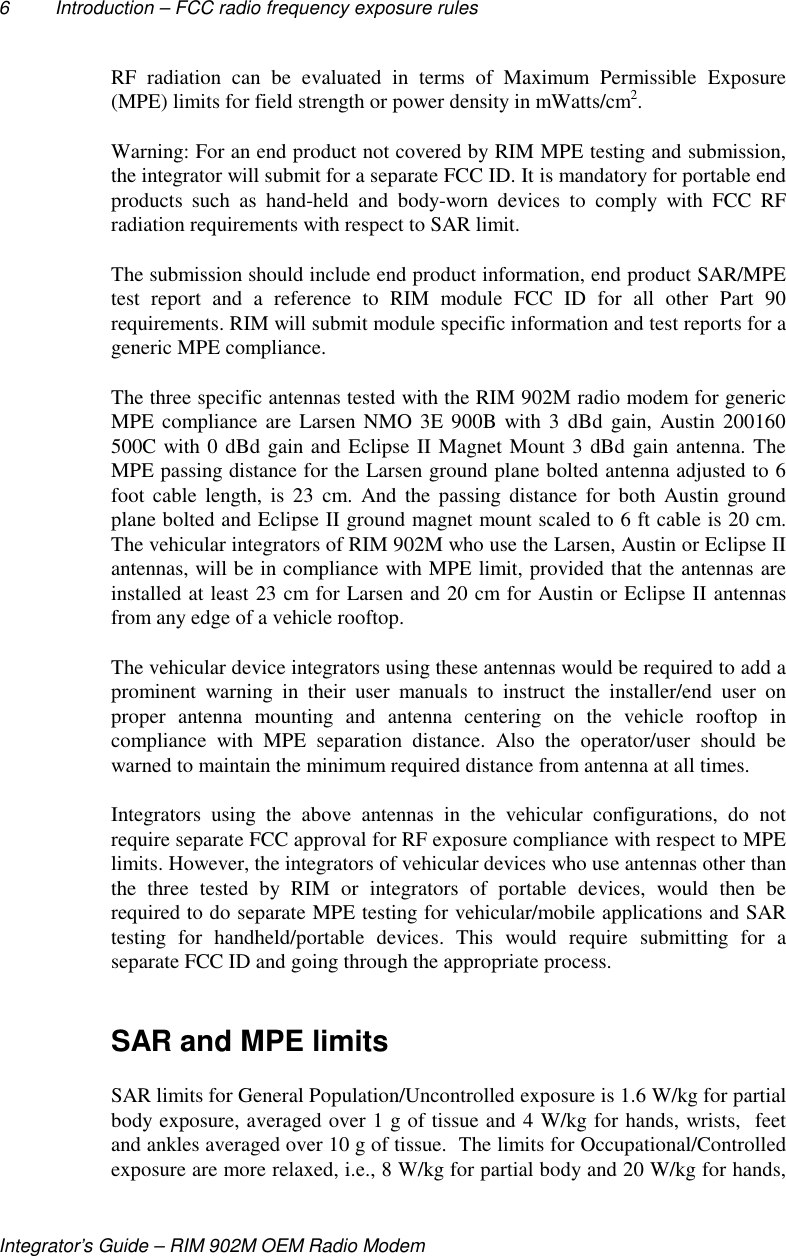
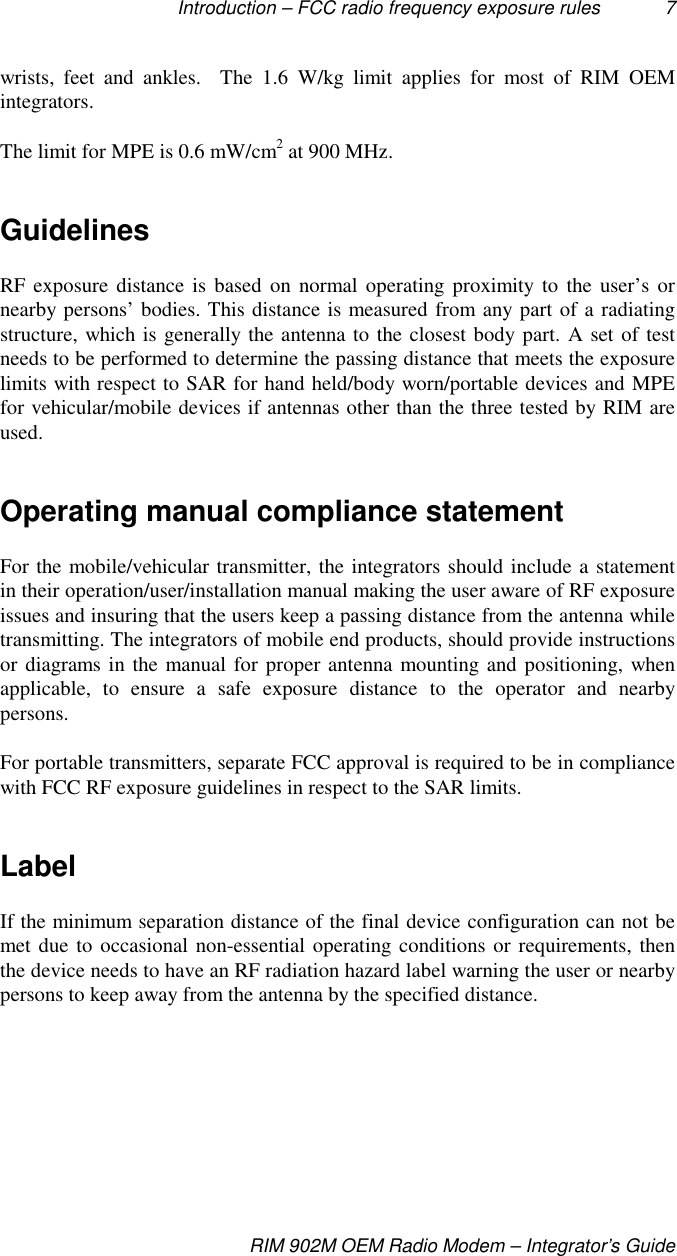
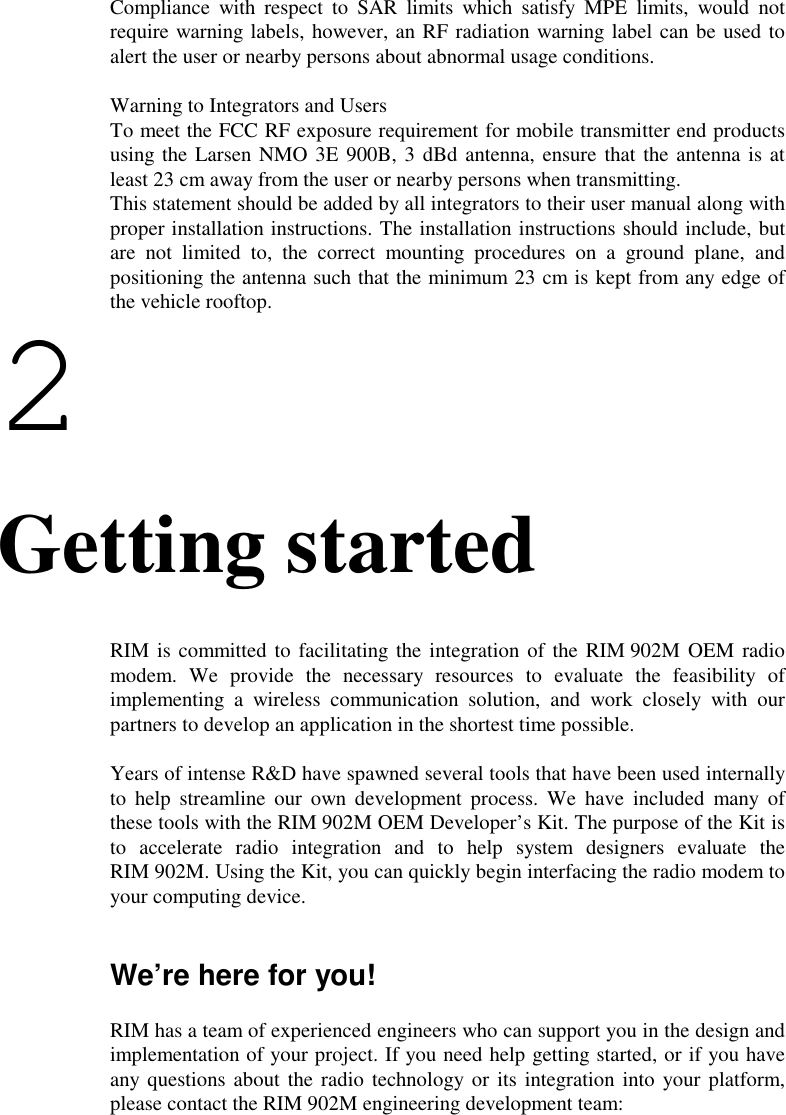
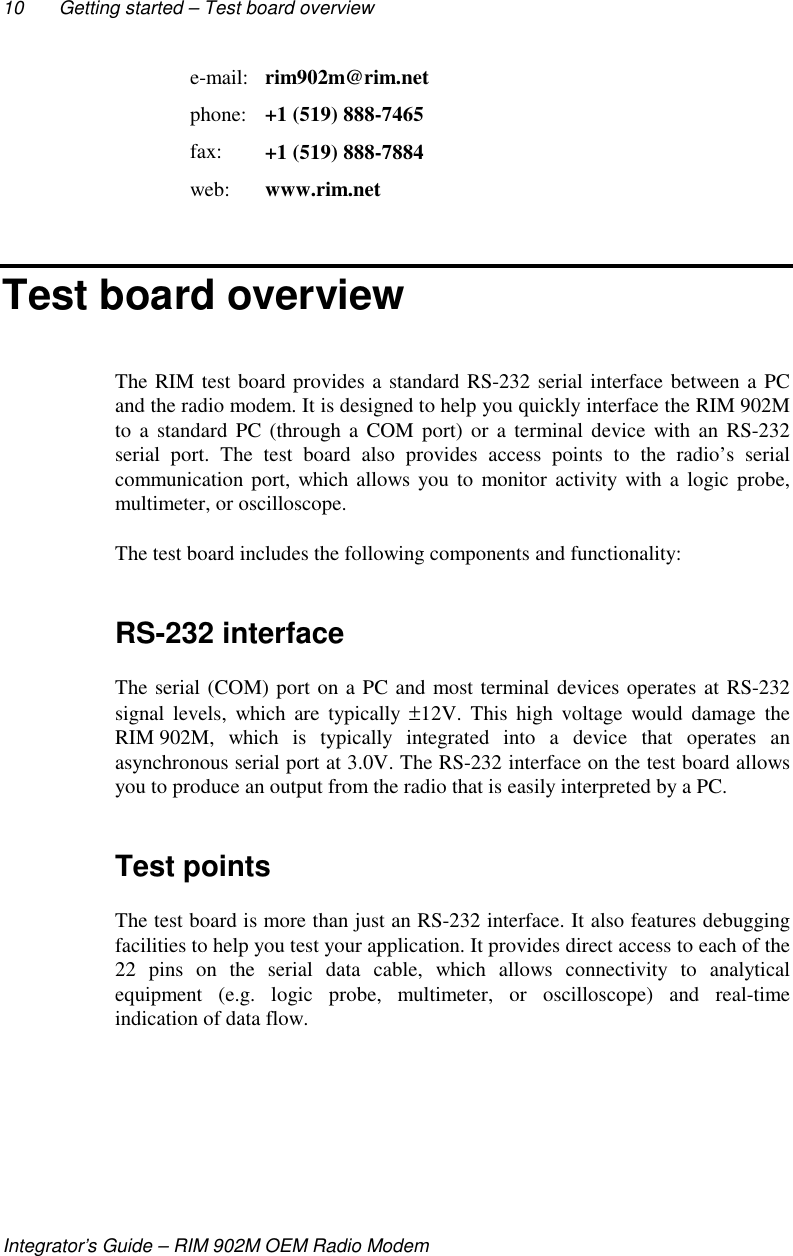
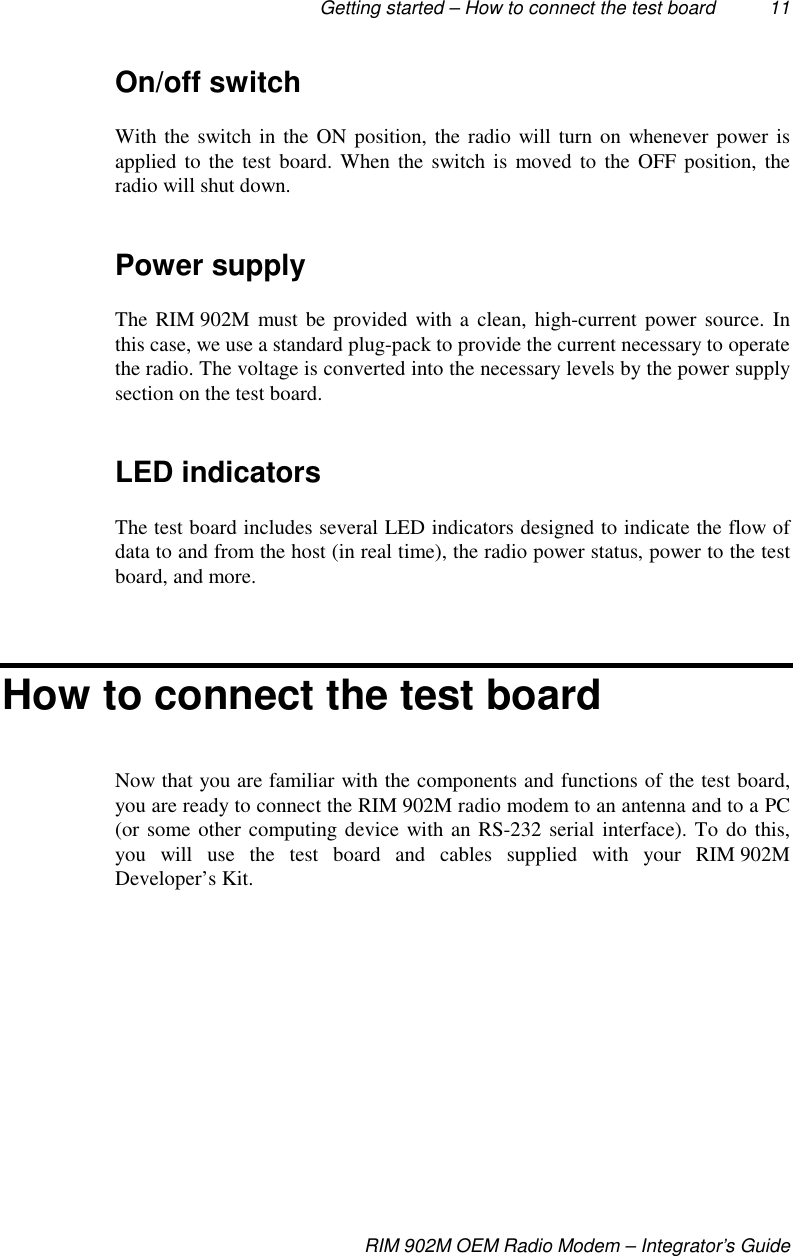
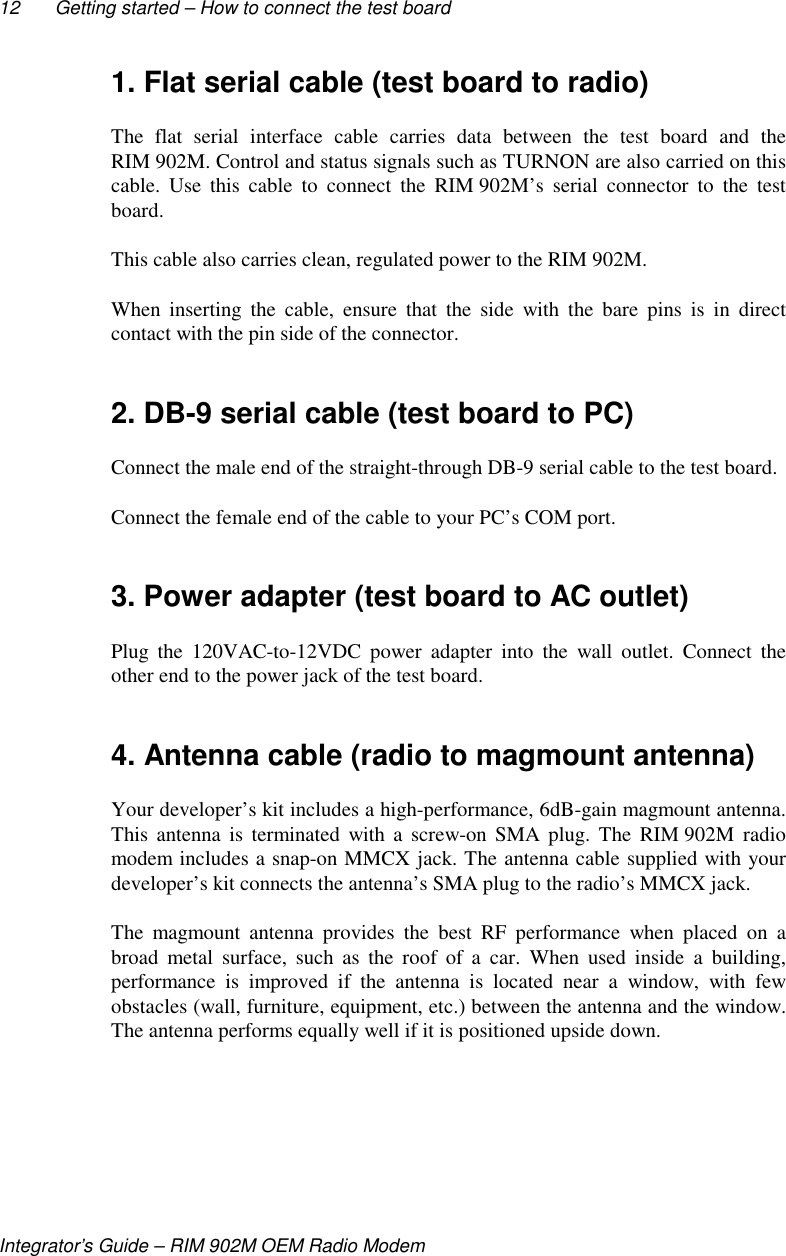
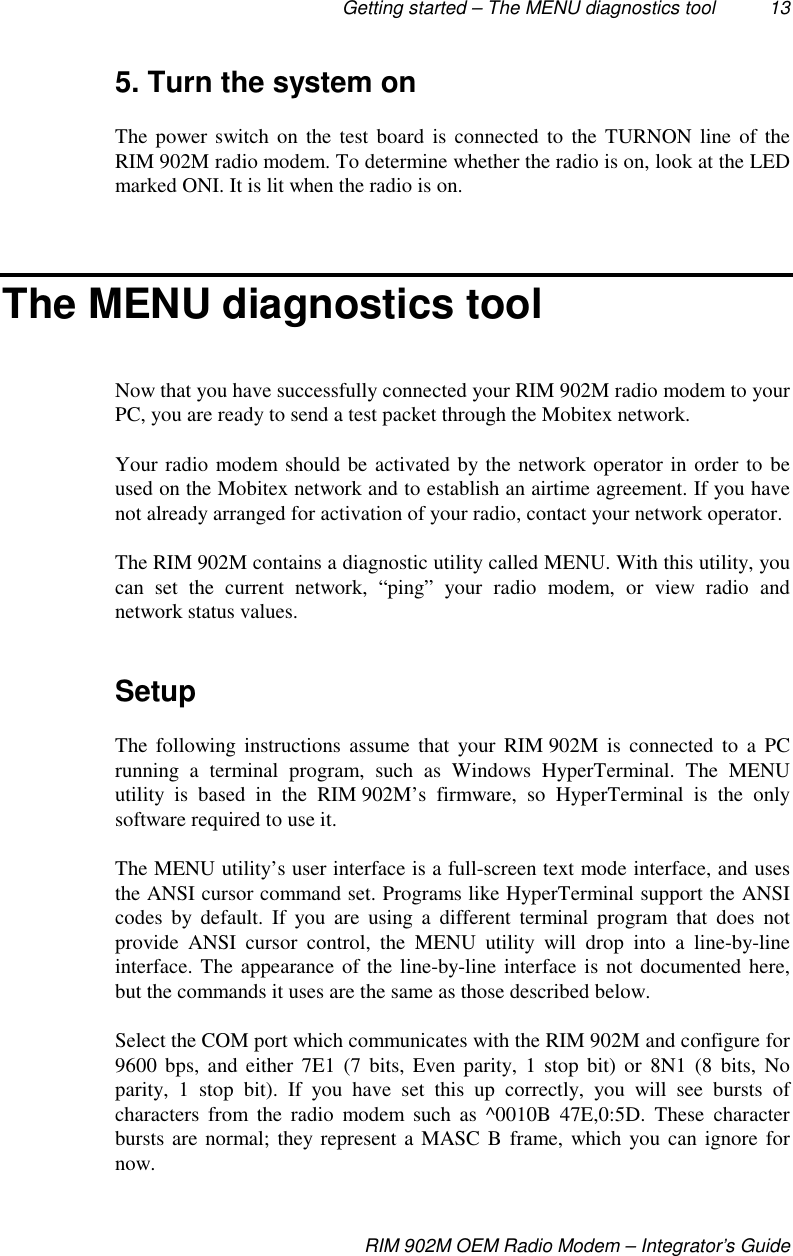
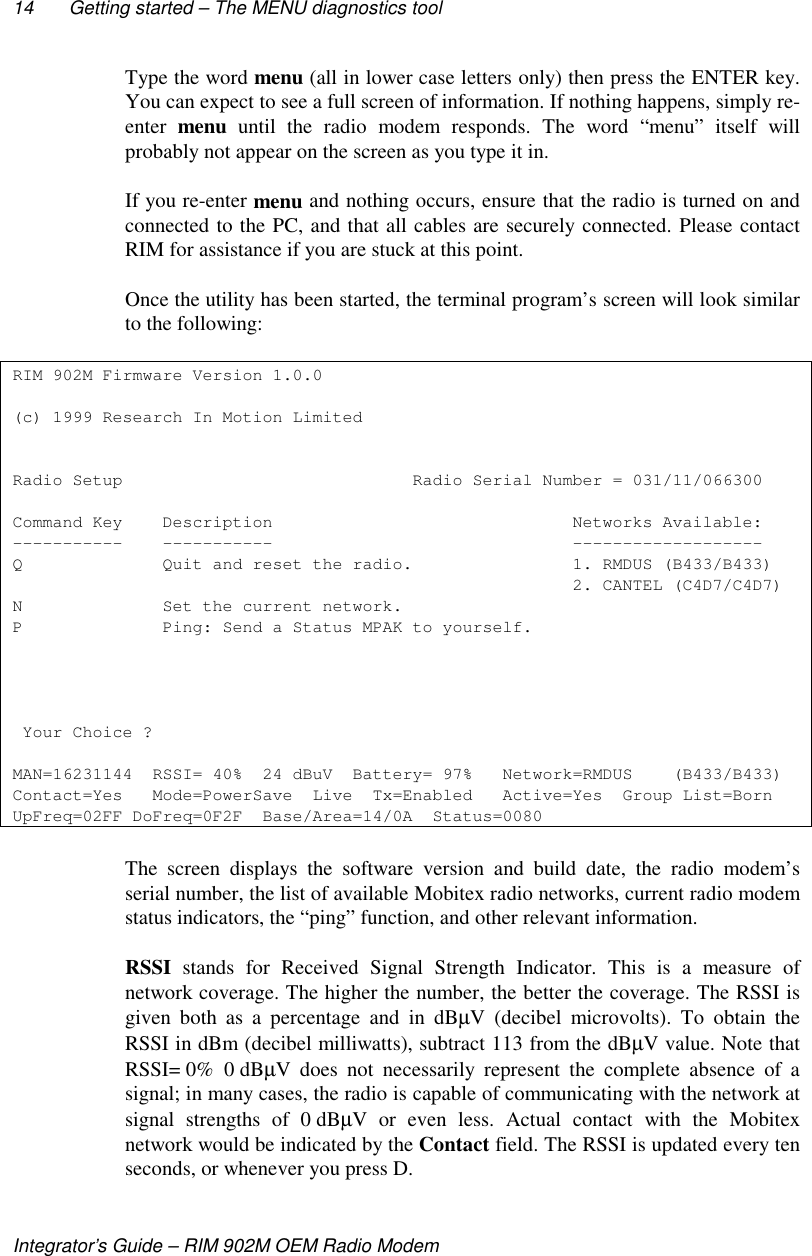
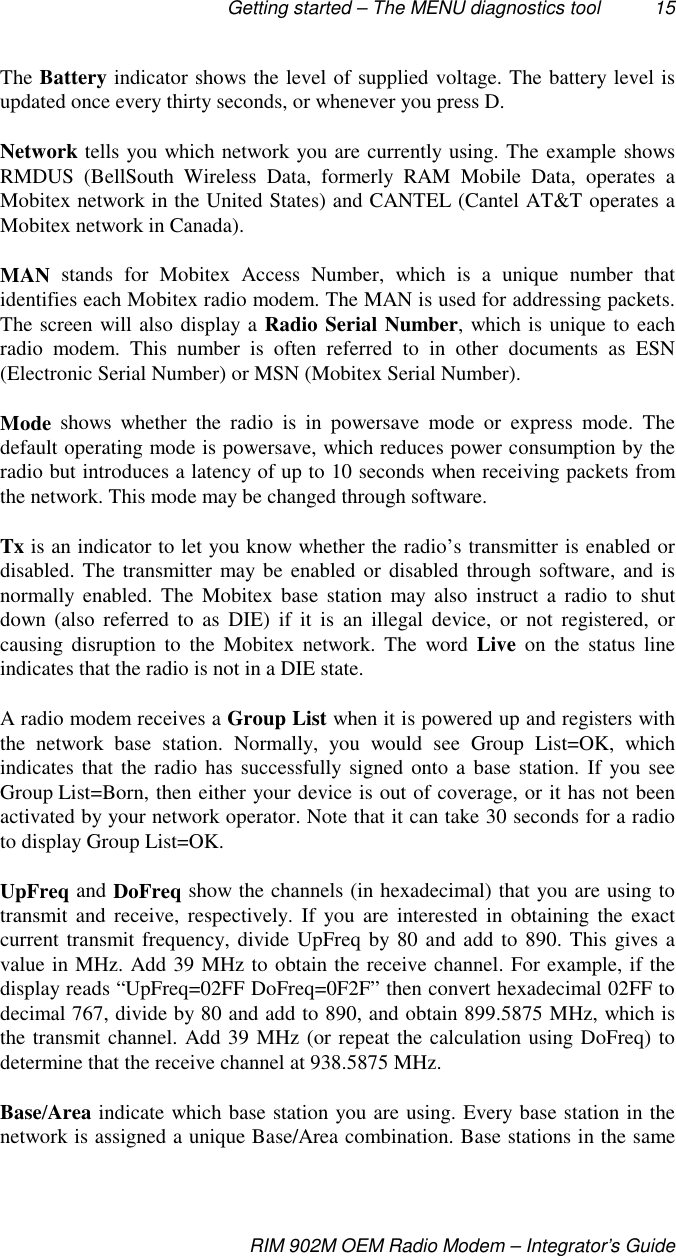
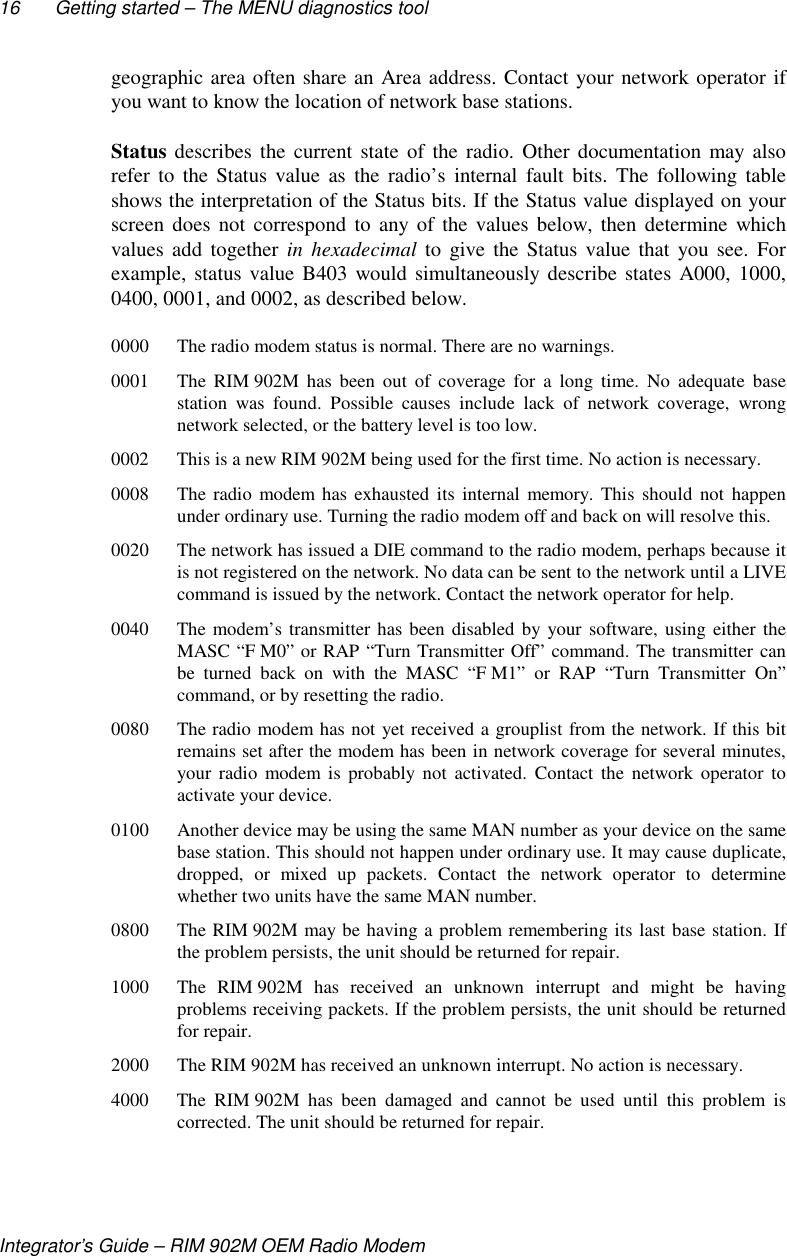
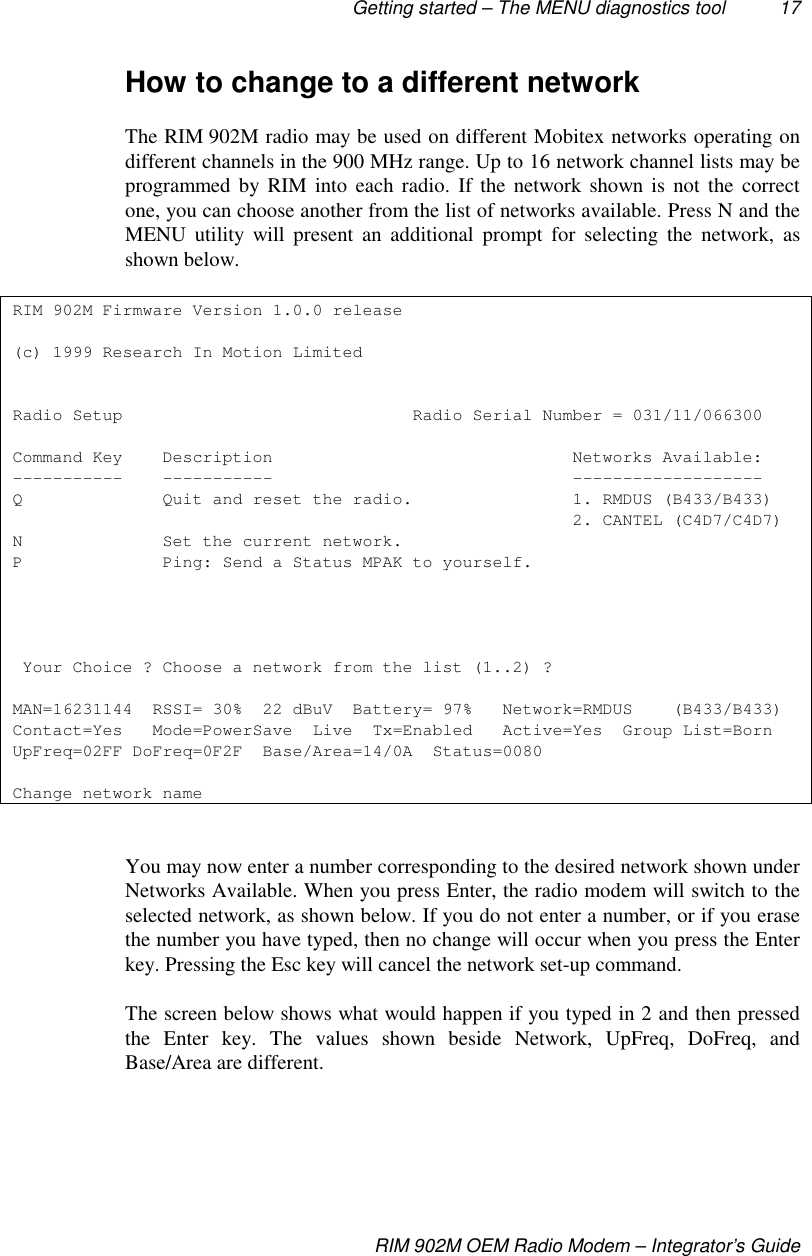
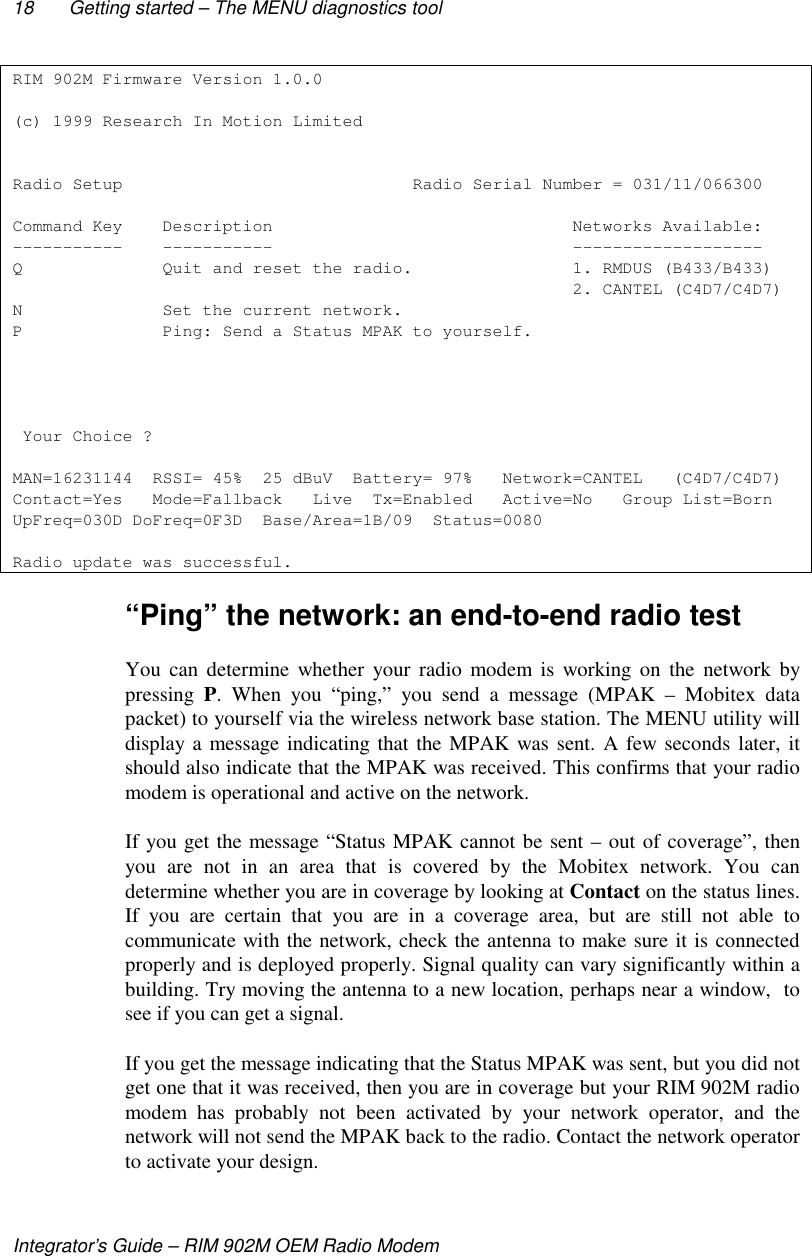
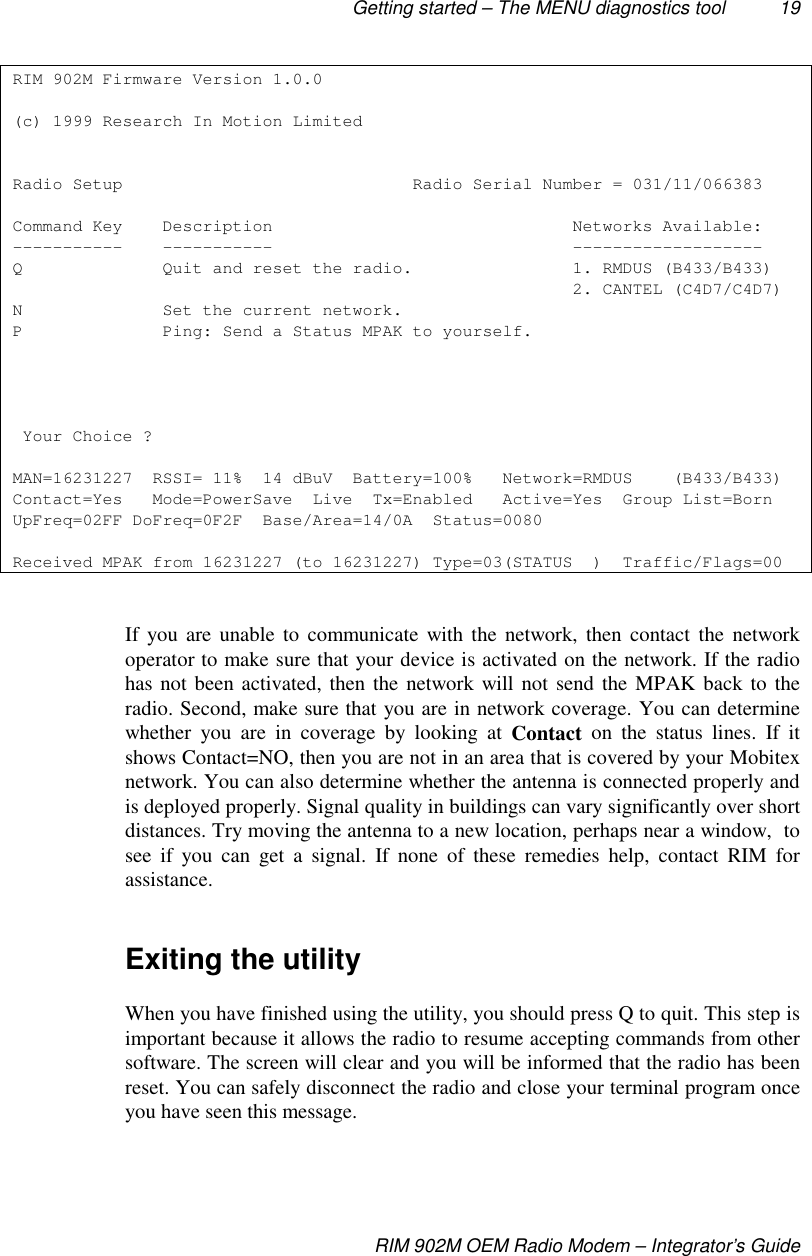
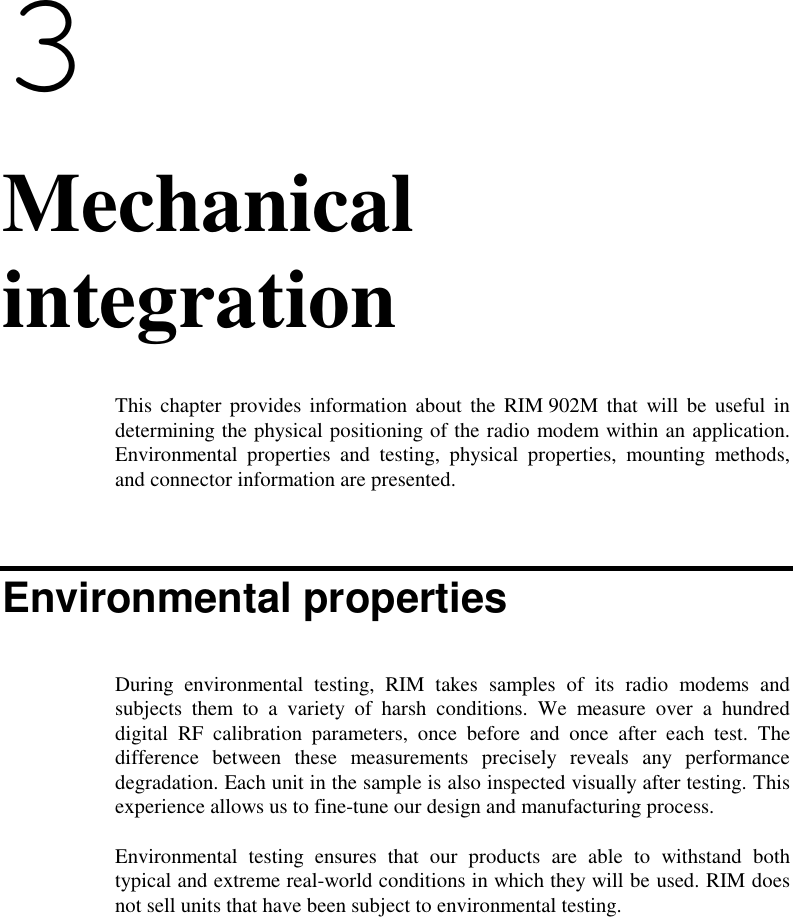
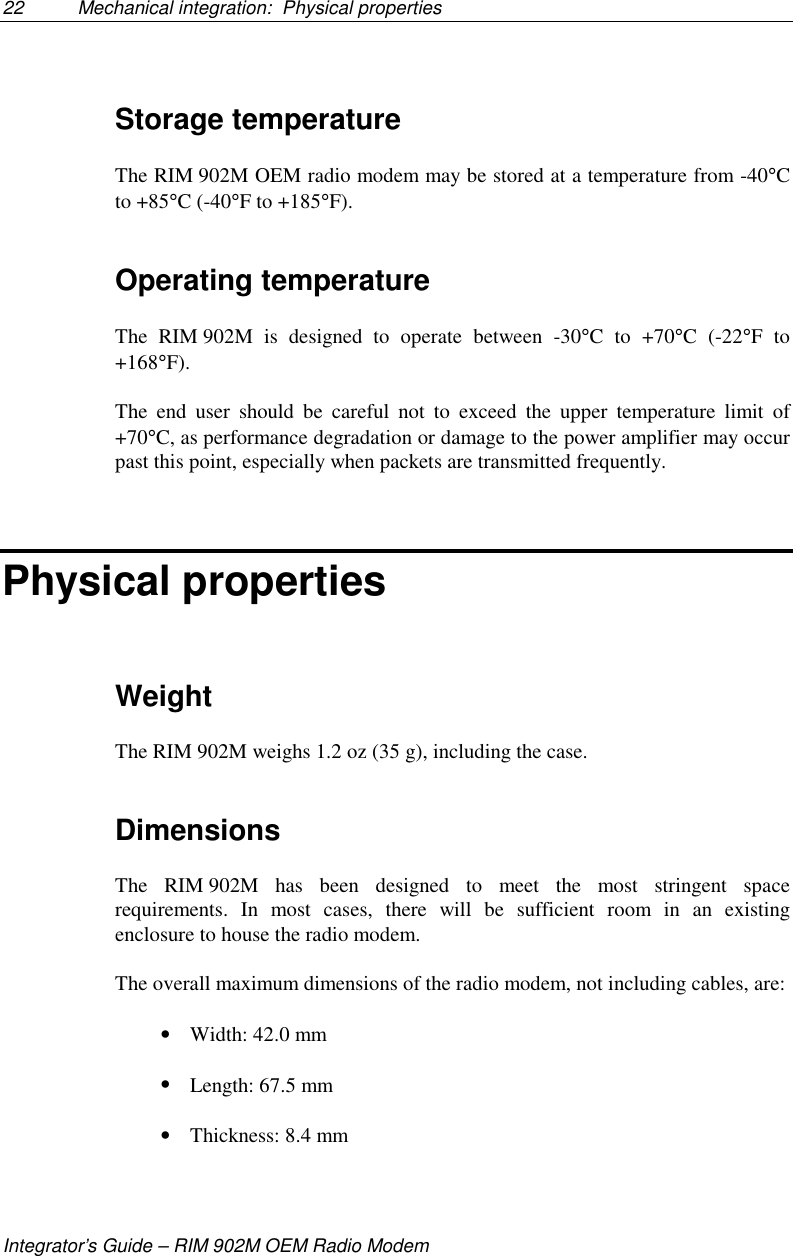
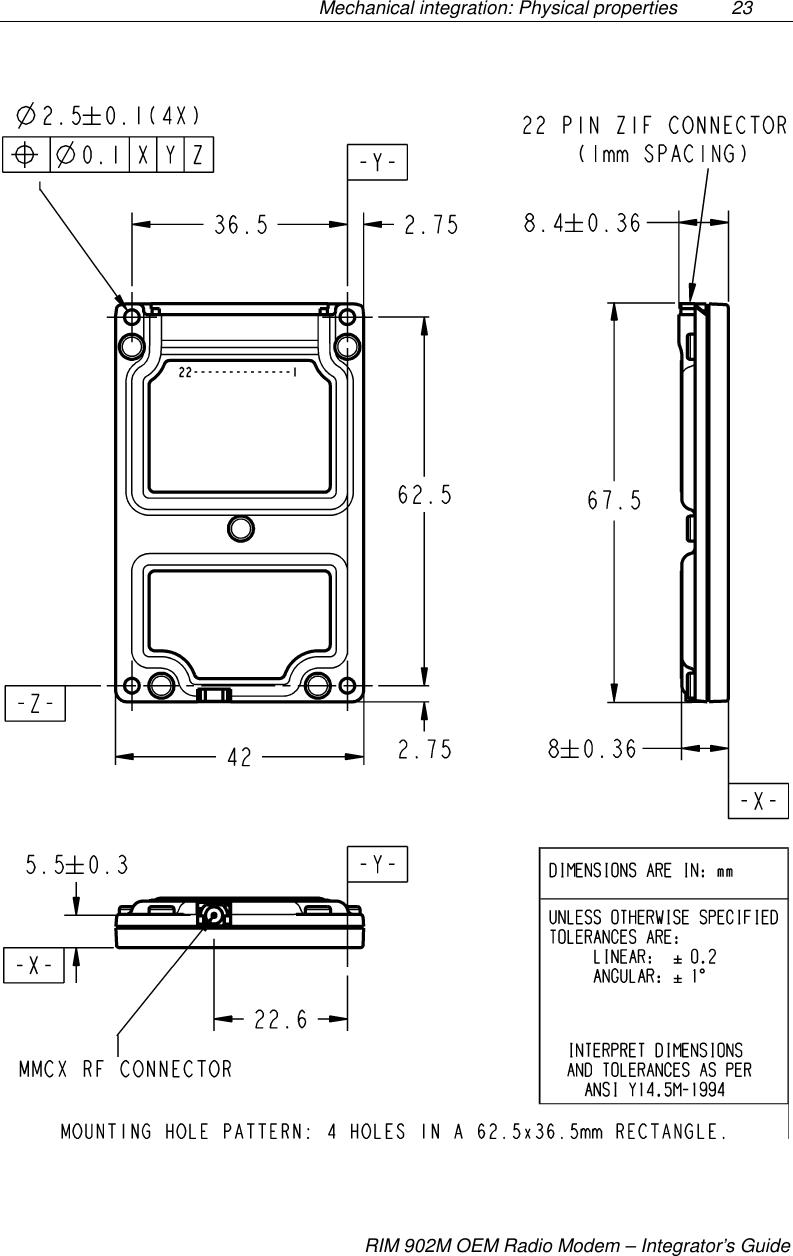
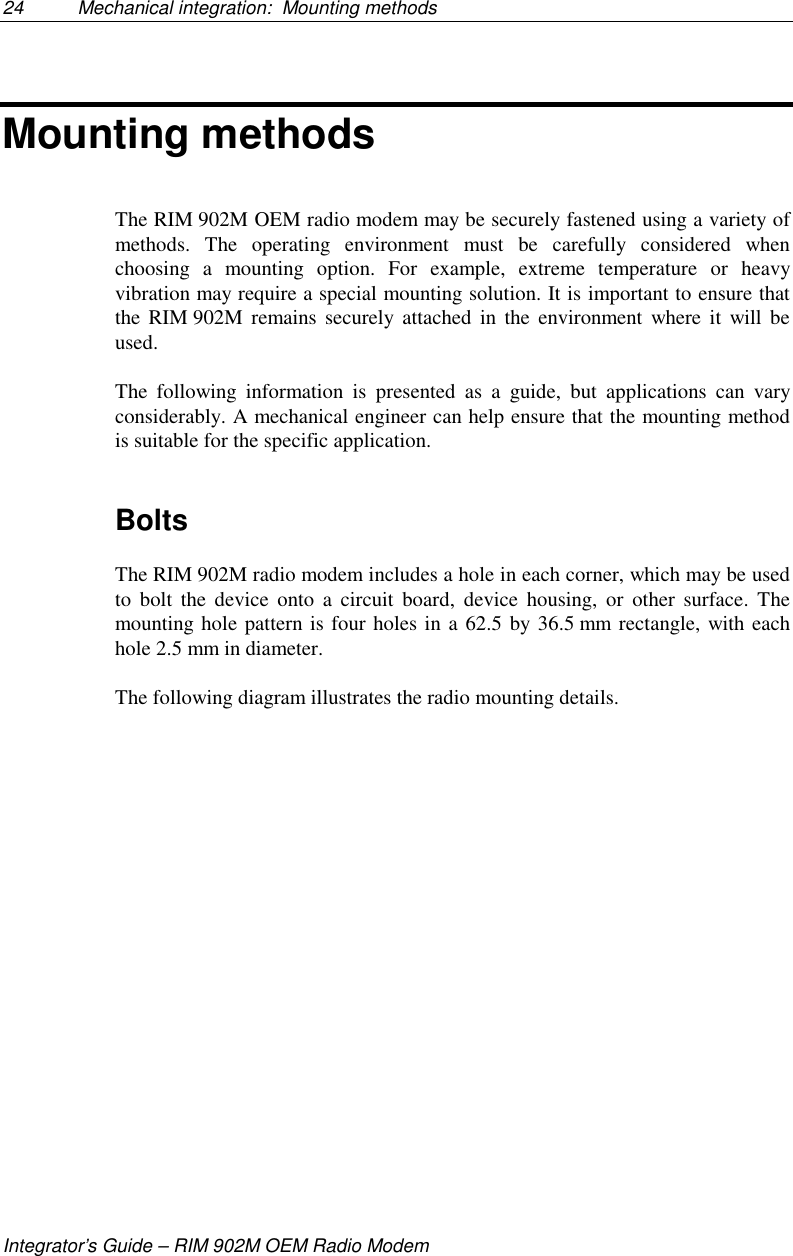
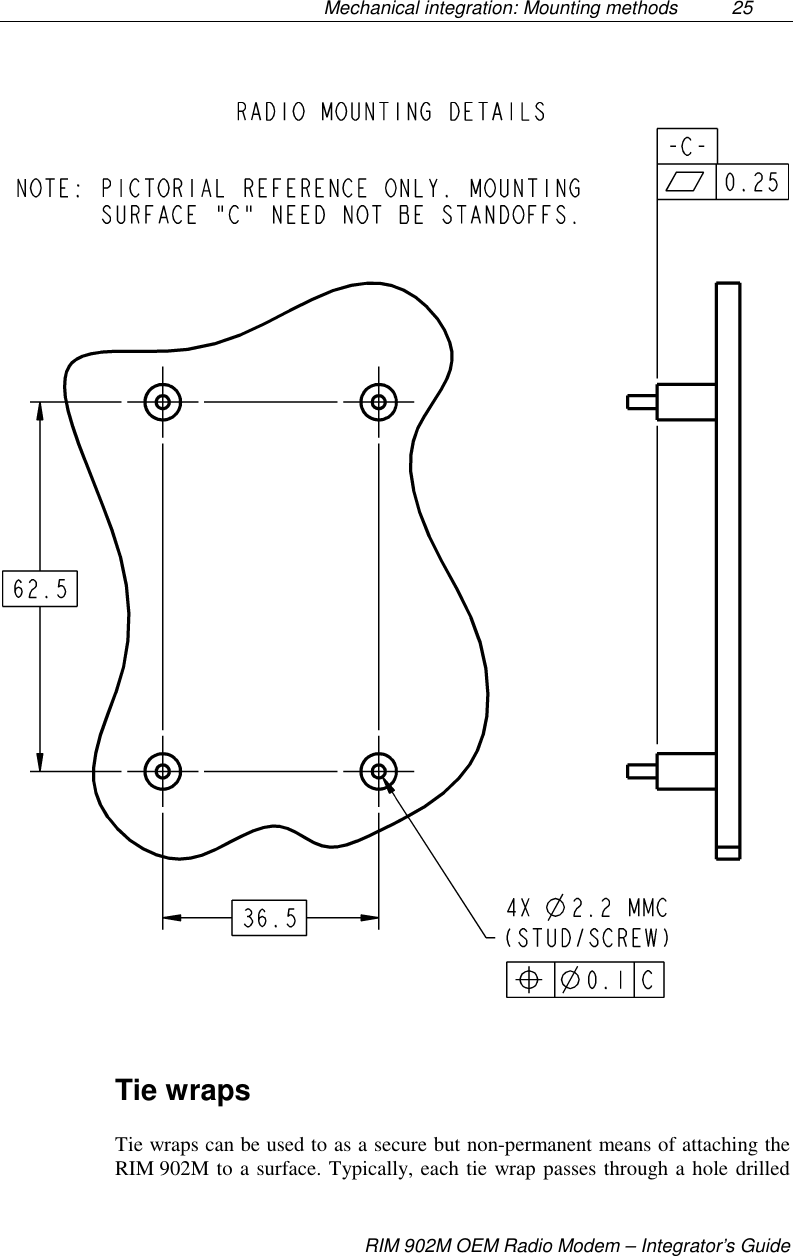
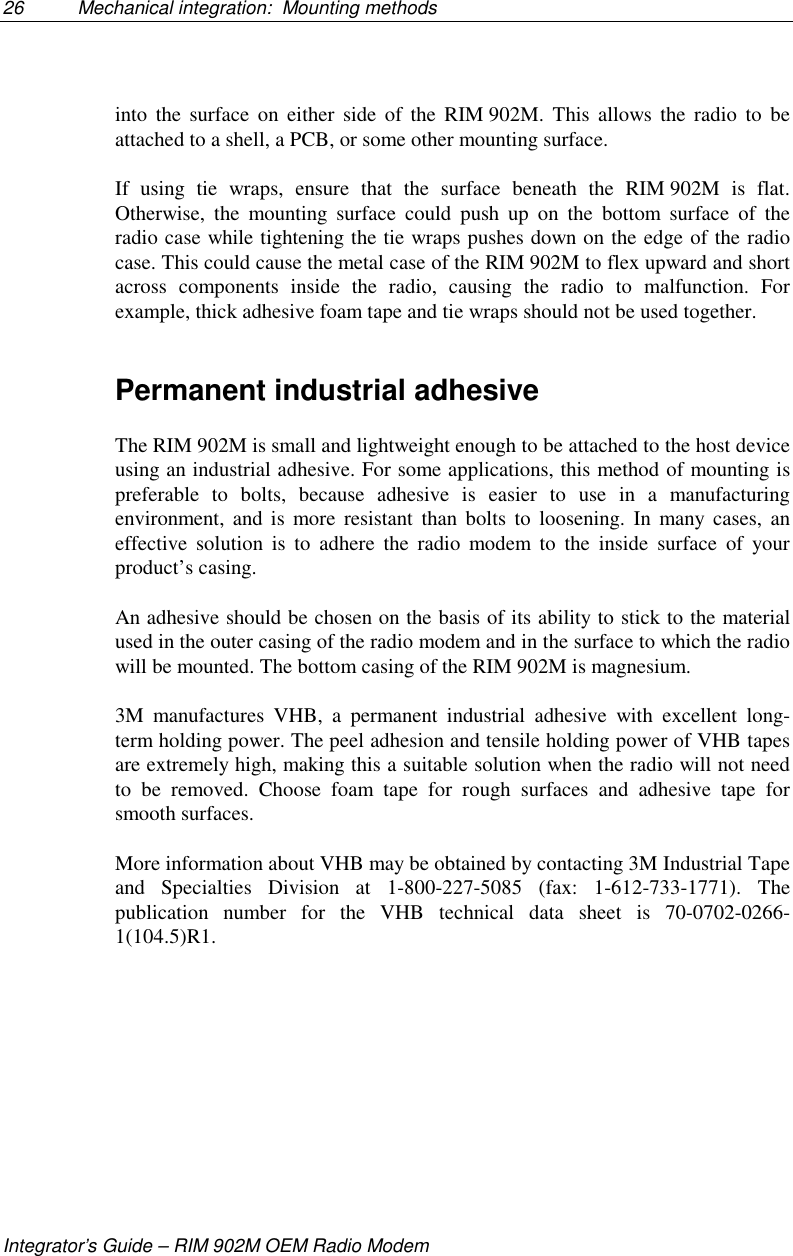
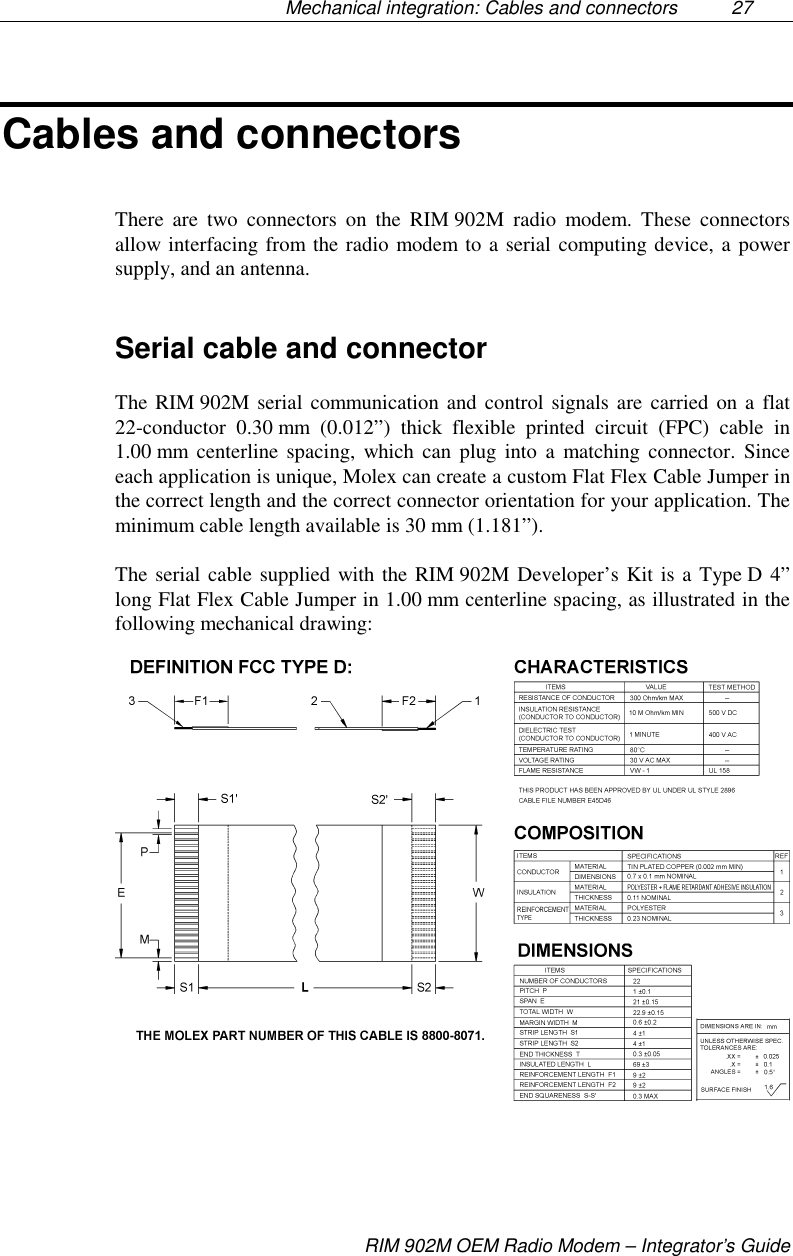
![28 Mechanical integration: Cables and connectorsIntegrator’s Guide – RIM 902M OEM Radio ModemThis cable can plug into a matching 22-position 1.0 [0.039] horizontal FPCconnector. A variety of connectors are manufactured by Molex. Moreinformation about each connector, including mechanical drawings, is availablefrom the manufacturer’s web site (www.molex.com), or you can contact RIM(rim902m@rim.net) for help with selecting an appropriate connector for yourapplication.Contact:Molex Headquarters Molex Electronics Ltd.Lisle, IL, USA Toronto, Ontario, Canadatel: (630) 969-4550 tel: (416) 292-1444fax: (630) 969-1352 fax: (416) 292-2922www.molex.comAntenna cable and connectorsRIM selected the industry-standard MMCX connector for the RIM 902Mbecause it is a very small connector that has the mating force to withstand heavyvibration.Typically, an antenna does not plug directly into a RIM 902M. Instead, anconnector at the outer casing of the device. This allows the antenna to beremoved from the system without having to open the device, and it eliminates asource of strain on the radio’s MMCX connector.The antenna cable should have low loss, an impedance of 50 Ω, and an MMCXjack that mates with the RIM 902M’s MMCX plug. The other end of the cablecan be any connector you choose, as long as it has an impedance of 50 Ω. AnSMA screw-on connector is suitable and widely available. TNC connectors arealso suitable, but larger than SMA. The antenna cable supplied with theRIM 902M developer’s kit has an MMCX connector on one end and an SMAconnector on the other. The cable is built with strain reliefs to prevent damage.Huber & Suhner can provide antenna cables and connectors. The parts describedbelow have an impedance of 50 Ω and are suitable for use with the RIM 902M.](https://usermanual.wiki/BlackBerry/R902M-2-O.Revised-copy-of-Integrator-Manual/User-Guide-45005-Page-36.png)
